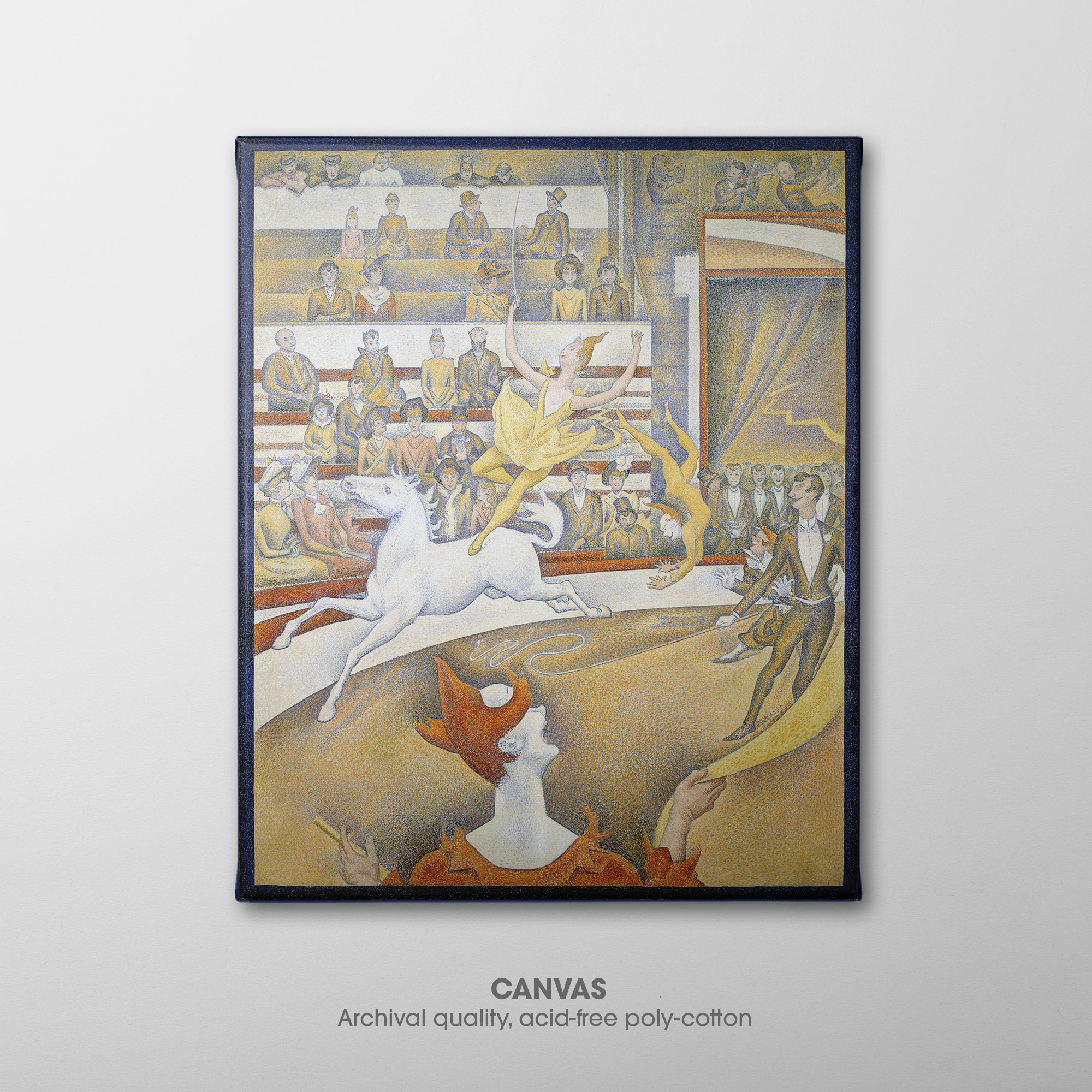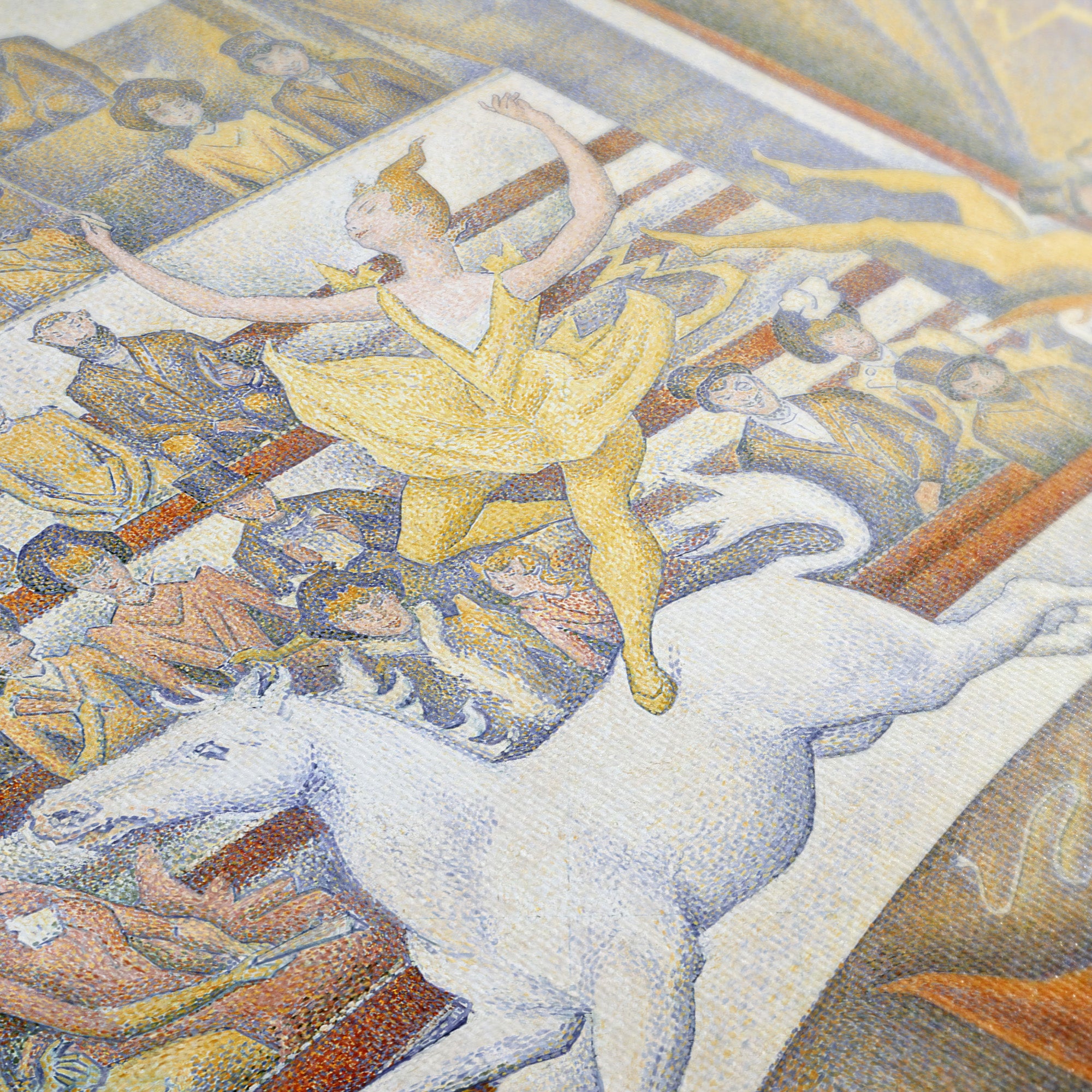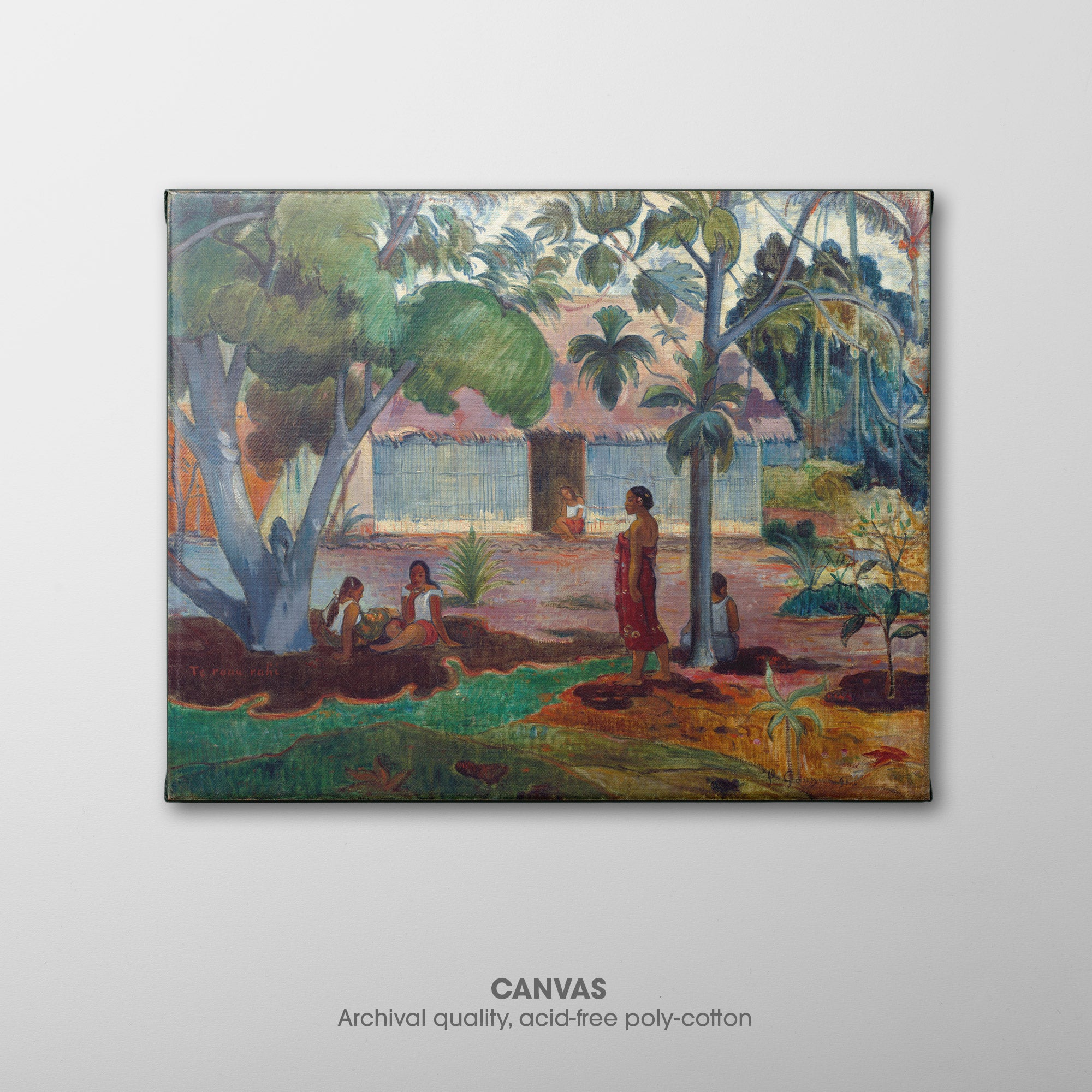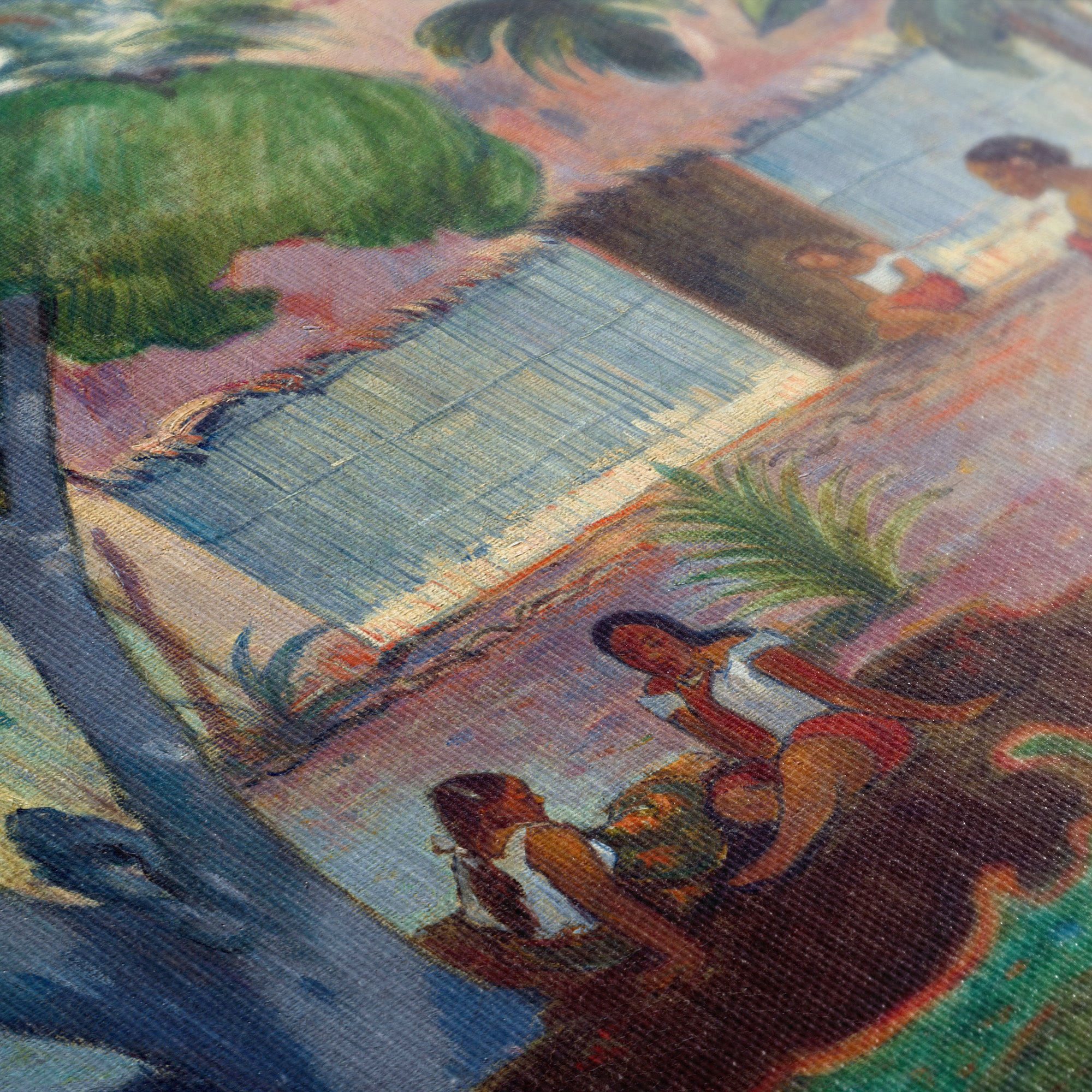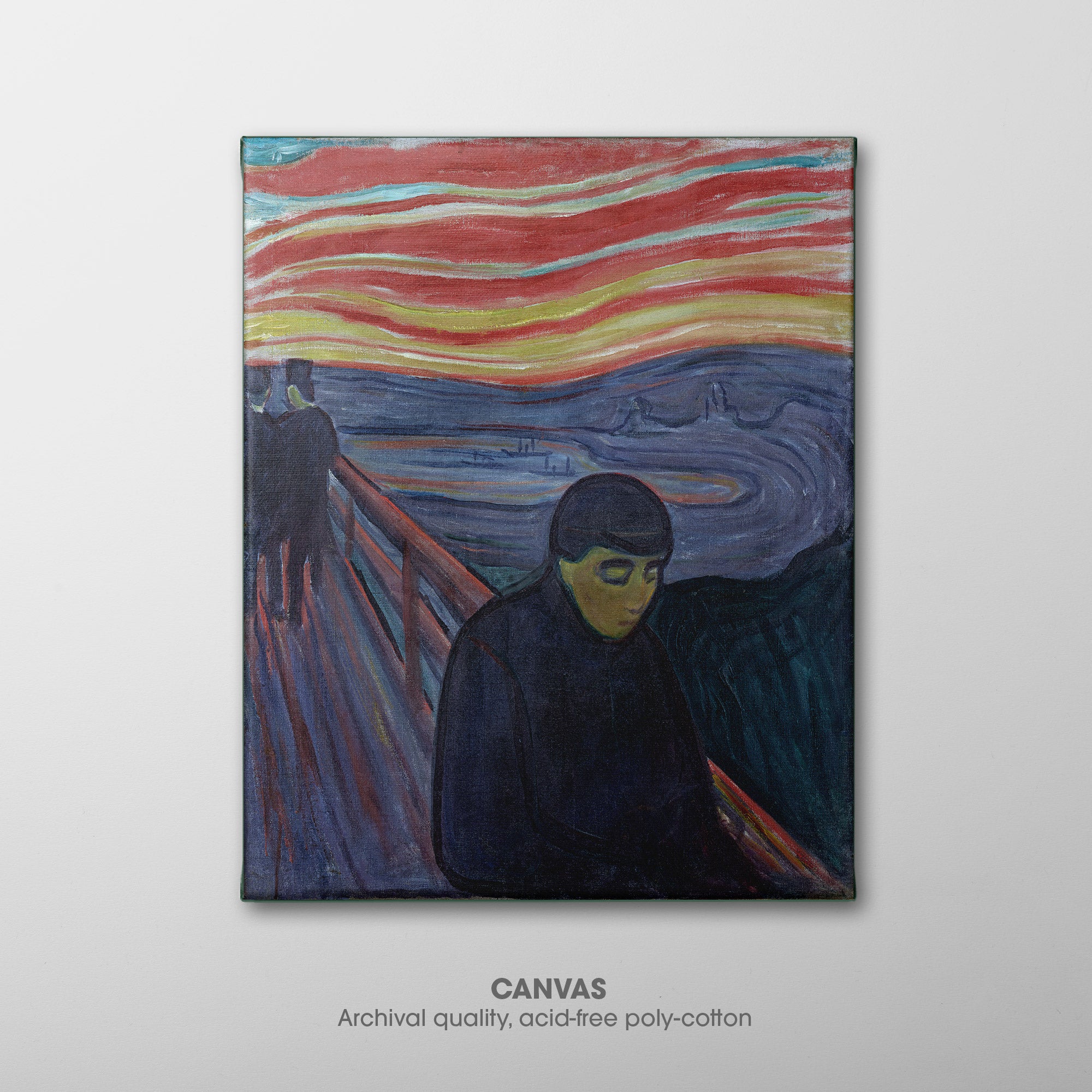Stretched canvas art is created from a giclée print on canvas (instead of paper), and like a traditional painting, the canvas is hand-stretched over a solid wood frame. It can be mounted in a float frame, or displayed on its own. The sides of the canvas are finished in a solid color that complements the artwork, creating a modern masterpiece ready to hang on your wall, without a frame.
-
Grand Canal, Venice ☱ Signac ☵ Canvas

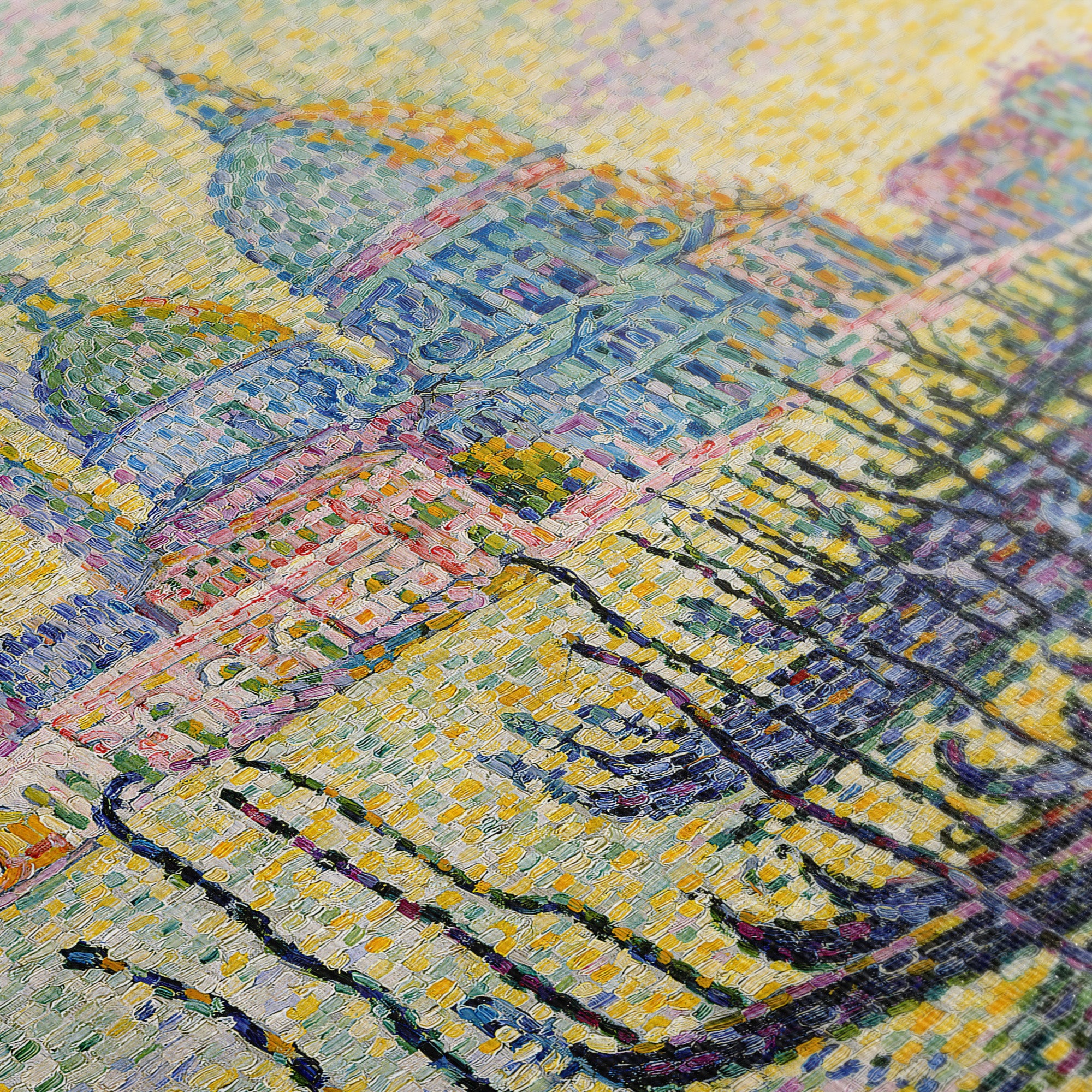 Entrance to the Grand Canal, Venice (1905, Le Grand Canal à Venise) by Paul Signac depicts the waters of the Grand Canal lined with many gondolas, and the Dogana da Mar and Santa Maria della Salute in the background. While Seurat applied ➵
Entrance to the Grand Canal, Venice (1905, Le Grand Canal à Venise) by Paul Signac depicts the waters of the Grand Canal lined with many gondolas, and the Dogana da Mar and Santa Maria della Salute in the background. While Seurat applied ➵◰ Canvas Reproductions
⧈ Framed Art Prints -
Port of La Rochelle ☵ Signac ☱ Canvas
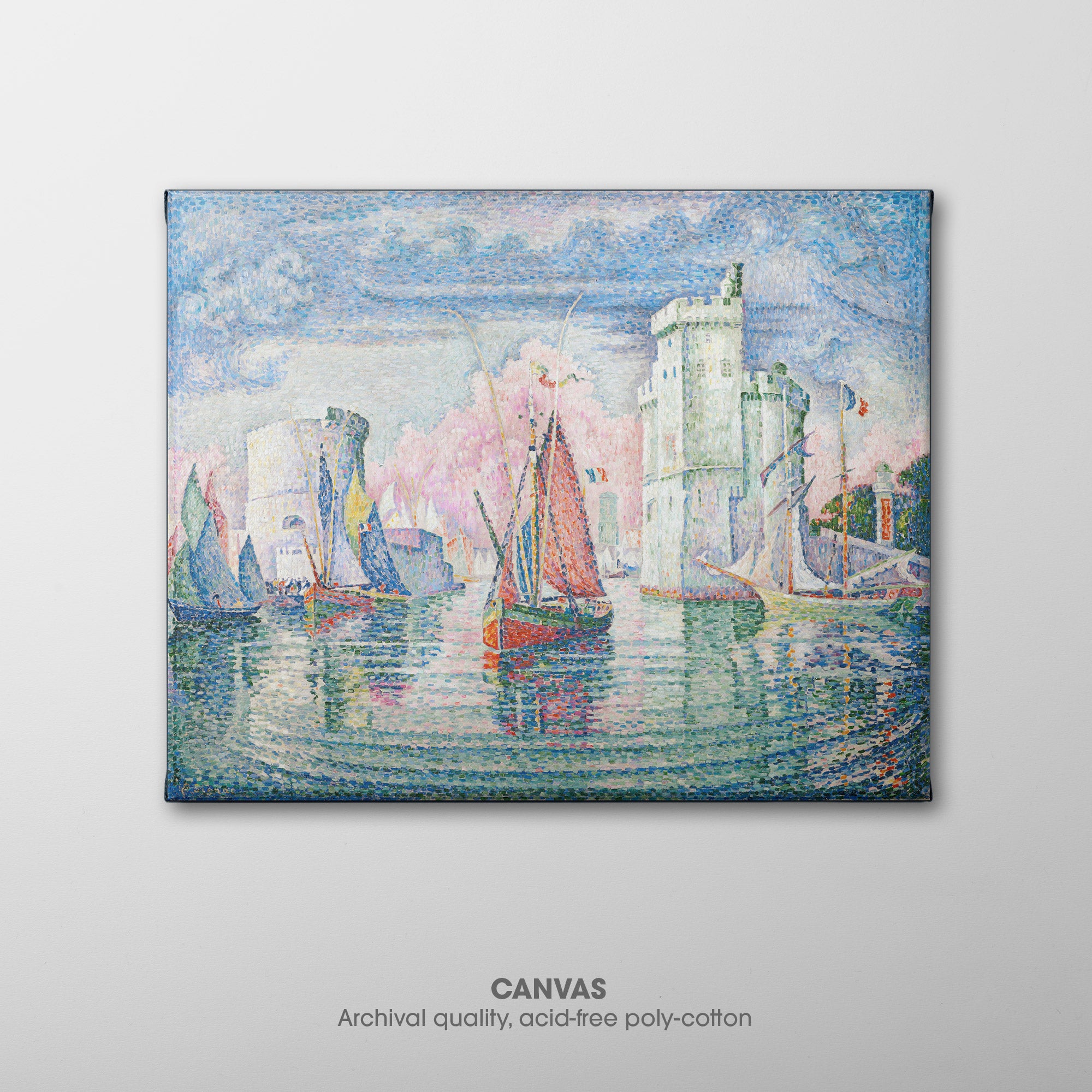
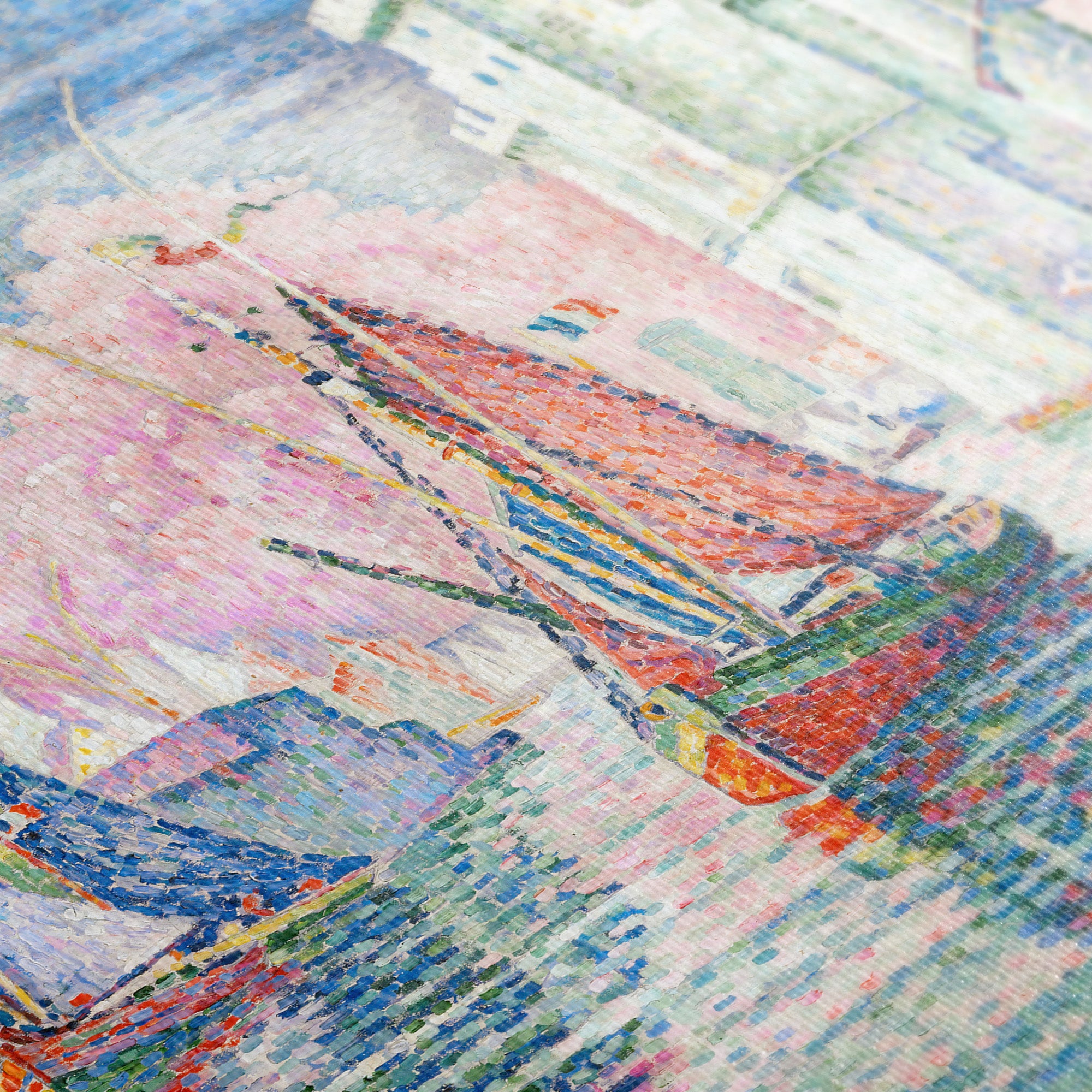 Entrance to the port of La Rochelle (1921, Entrée du port de La Rochelle) by Paul Signac depicts boats alongside the port's towers, remnants of medieval maritime fortifications. The interplay of sunlight and shadow brings the scene to life, with reflections on ➵
Entrance to the port of La Rochelle (1921, Entrée du port de La Rochelle) by Paul Signac depicts boats alongside the port's towers, remnants of medieval maritime fortifications. The interplay of sunlight and shadow brings the scene to life, with reflections on ➵◰ Canvas Reproductions
⧈ Framed Art Prints -
The Pine Tree at Saint Tropez ☲ Signac ☷ Canvas
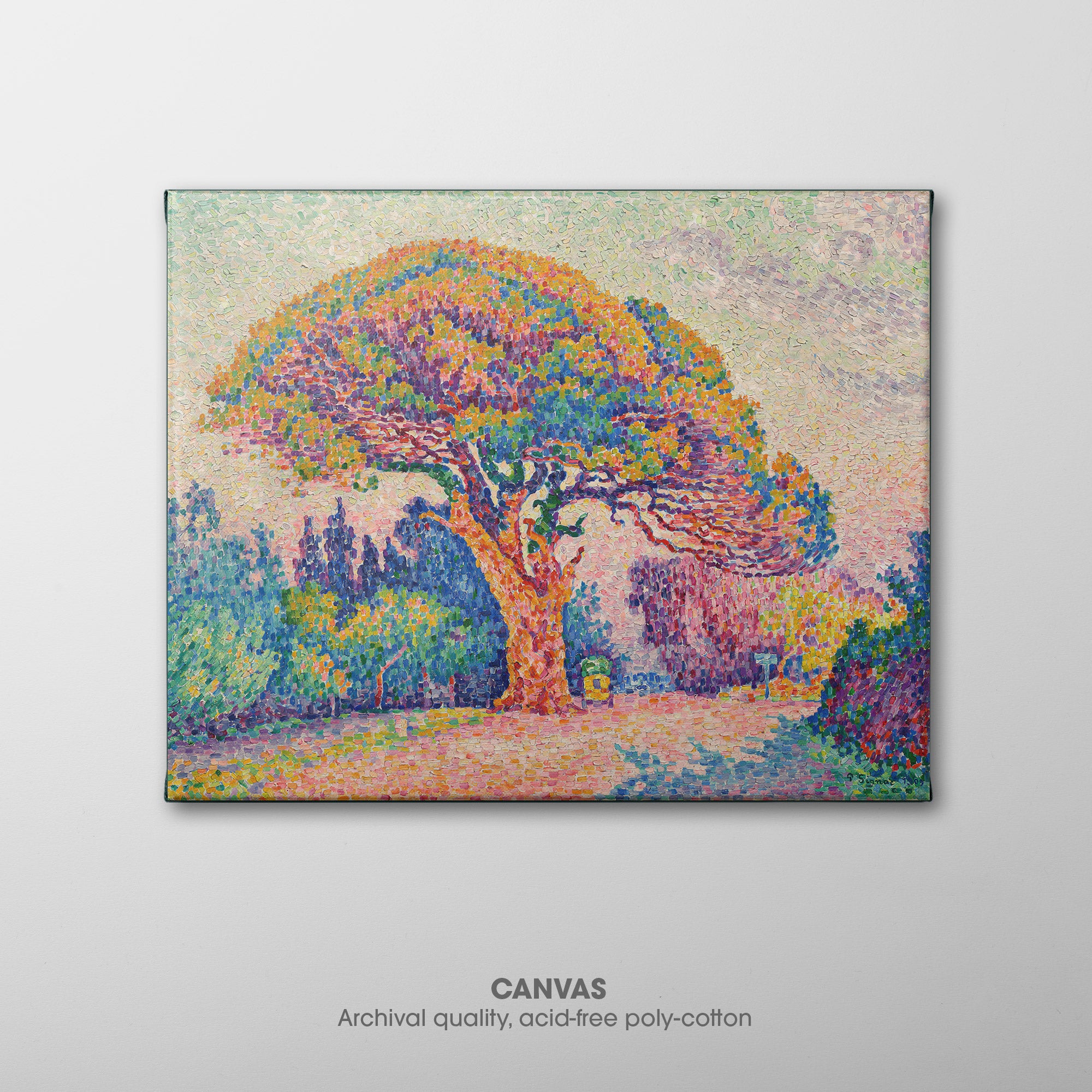
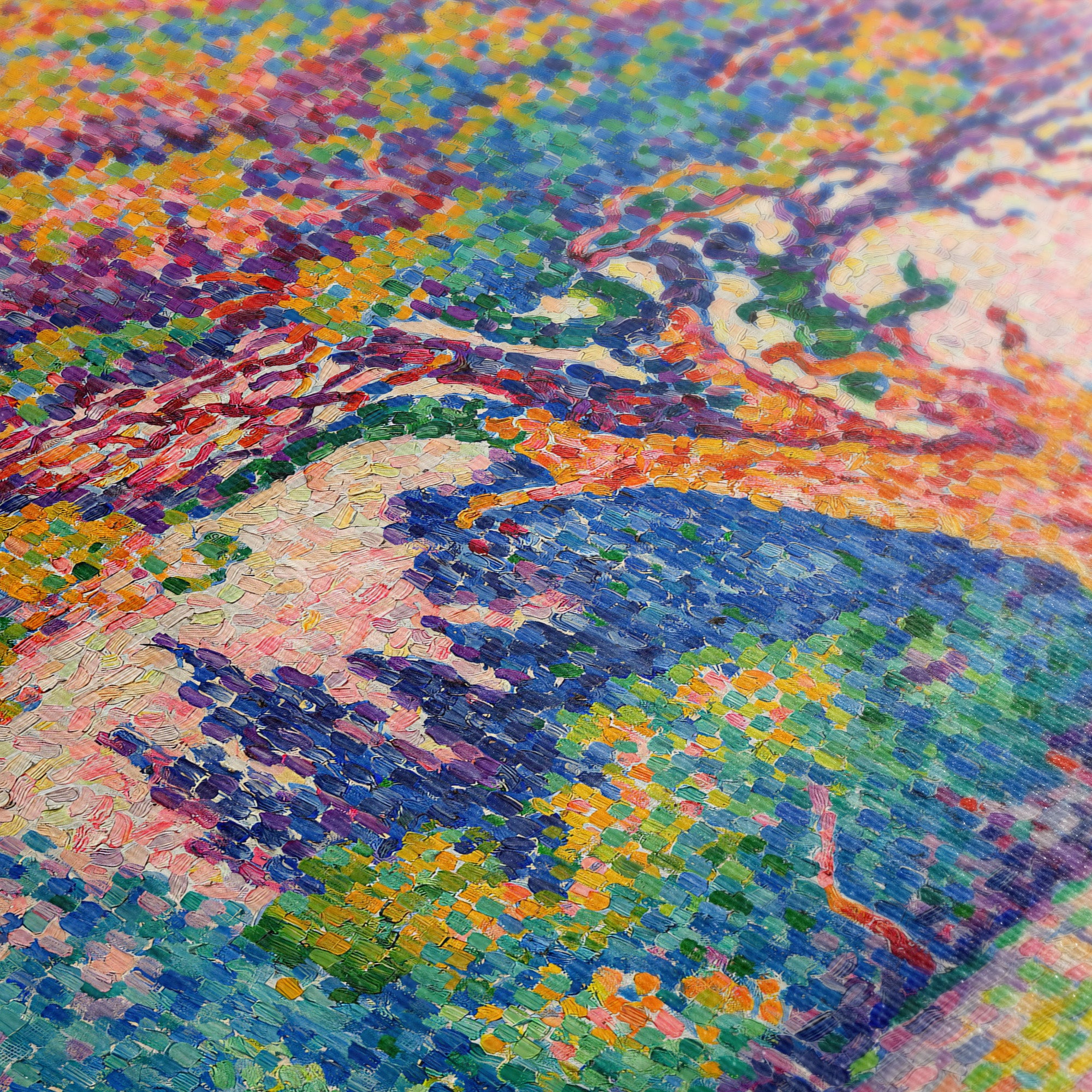 The Pine Tree at Saint Tropez (1909, Le pin, Saint-Tropez) by Paul Signac, also know as Bertaud Gassin's Pine (Le Pin de Bertaud Gassin), depicts a pine tree set against the backdrop of a sunny Saint-Tropez landscape. Signac uses bold colors and ➵
The Pine Tree at Saint Tropez (1909, Le pin, Saint-Tropez) by Paul Signac, also know as Bertaud Gassin's Pine (Le Pin de Bertaud Gassin), depicts a pine tree set against the backdrop of a sunny Saint-Tropez landscape. Signac uses bold colors and ➵◰ Canvas Reproductions
⧈ Framed Art Prints -
La Cité, Paris ☰ Signac ☵ Canvas
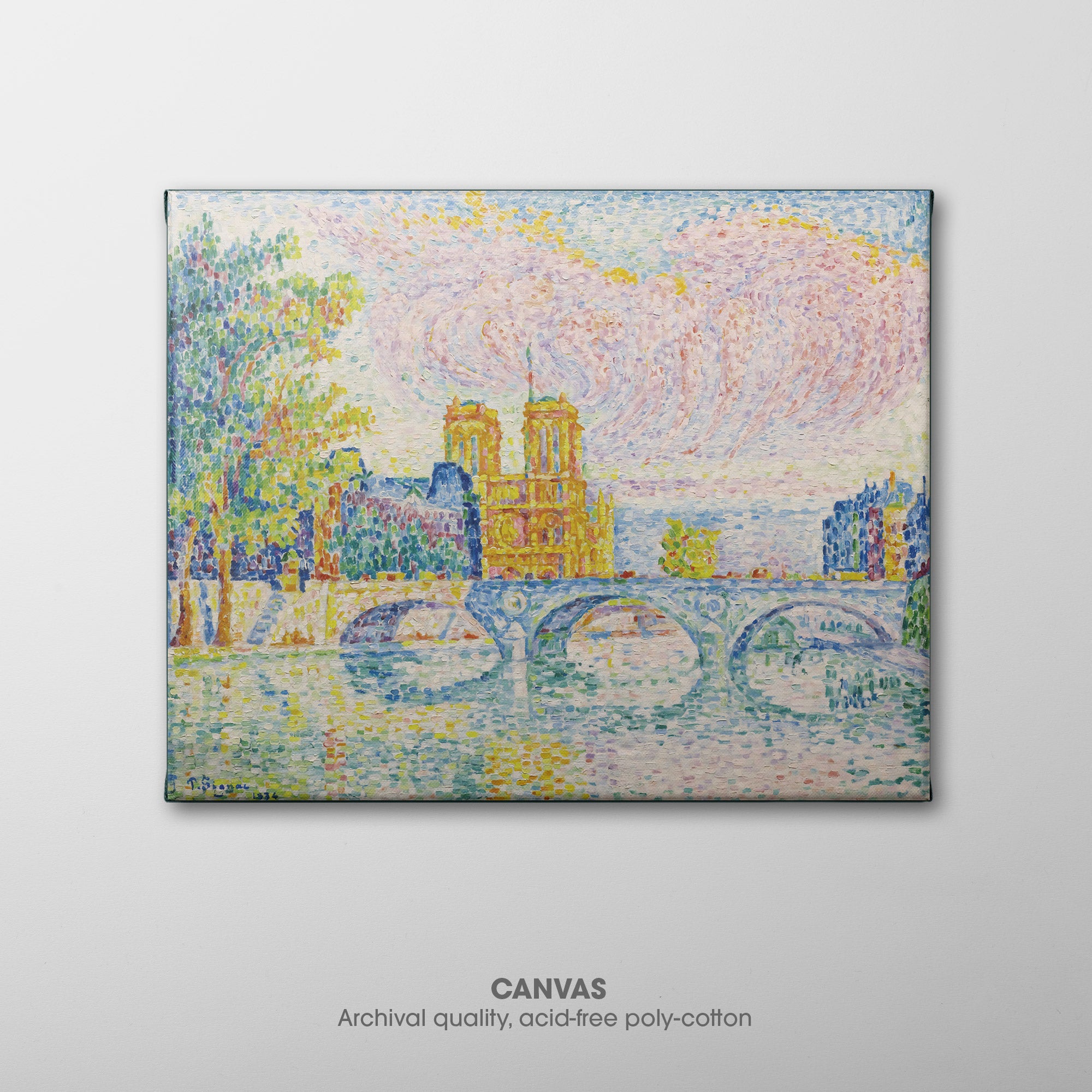
 La Cité, Paris (1934) by Paul Signac depicts the Quai de Montebello, one of the many bridges over the Seine, the trees along the bank, and Notre-Dame in the background. Signac's signature pointillist style was inspired by Georges Seurat in 1884, and ➵
La Cité, Paris (1934) by Paul Signac depicts the Quai de Montebello, one of the many bridges over the Seine, the trees along the bank, and Notre-Dame in the background. Signac's signature pointillist style was inspired by Georges Seurat in 1884, and ➵◰ Canvas Reproductions
⧈ Framed Art Prints -
The Golden Horn, Constantinople ☰ Signac ☲ Canvas
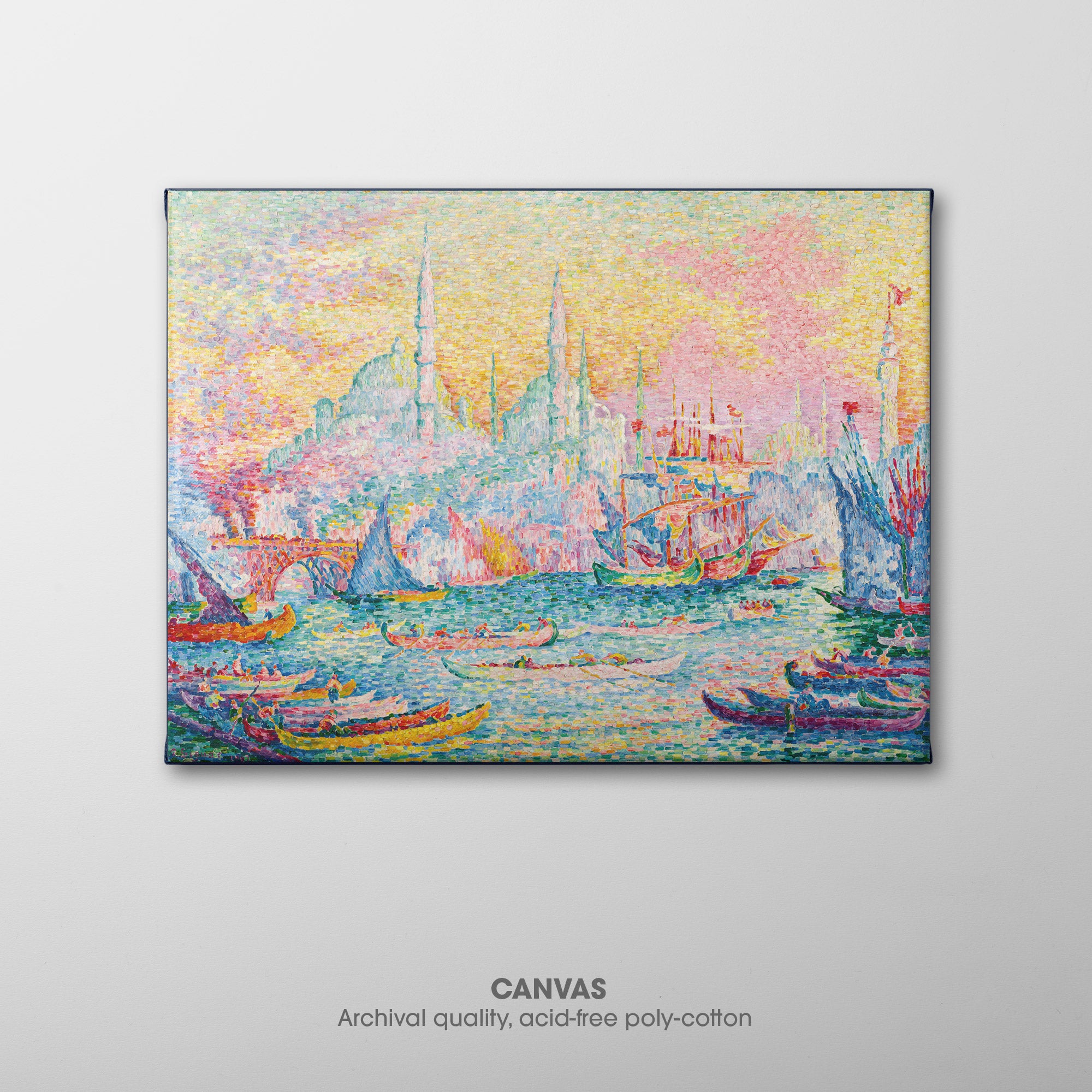
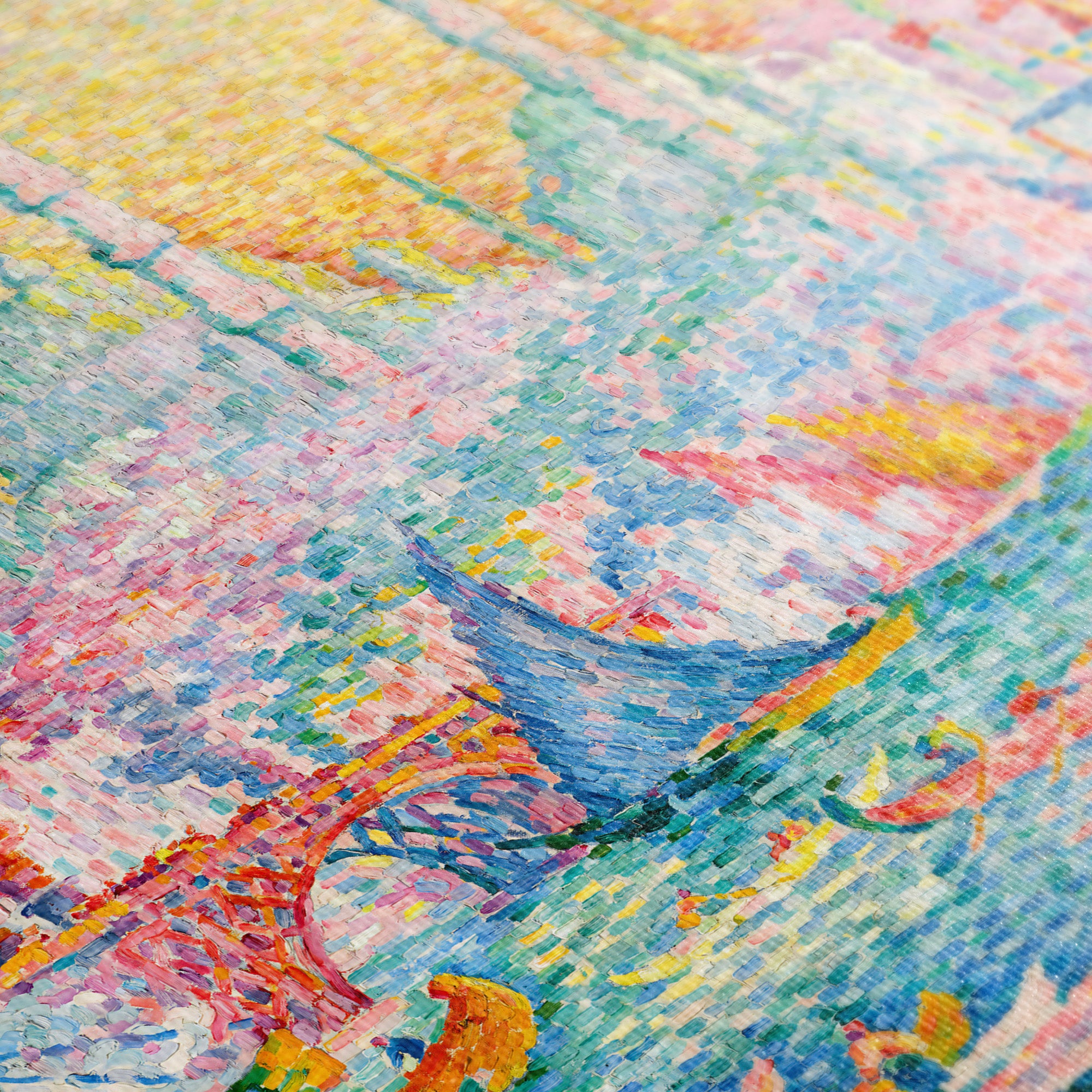 The Golden Horn, Constantinople (1907, La Corne d'Or, Constantinople) by Paul Signac depicts the Golden Horn, the inlet that historically separated Constantinople (present day Istanbul) and kept the peninsula strategically safe from invaders. The harbor is filled with boats, and skyline filled ➵
The Golden Horn, Constantinople (1907, La Corne d'Or, Constantinople) by Paul Signac depicts the Golden Horn, the inlet that historically separated Constantinople (present day Istanbul) and kept the peninsula strategically safe from invaders. The harbor is filled with boats, and skyline filled ➵◰ Canvas Reproductions
⧈ Framed Art Prints -
Sunset at Douarnenez ☲ Renoir ☵ Canvas
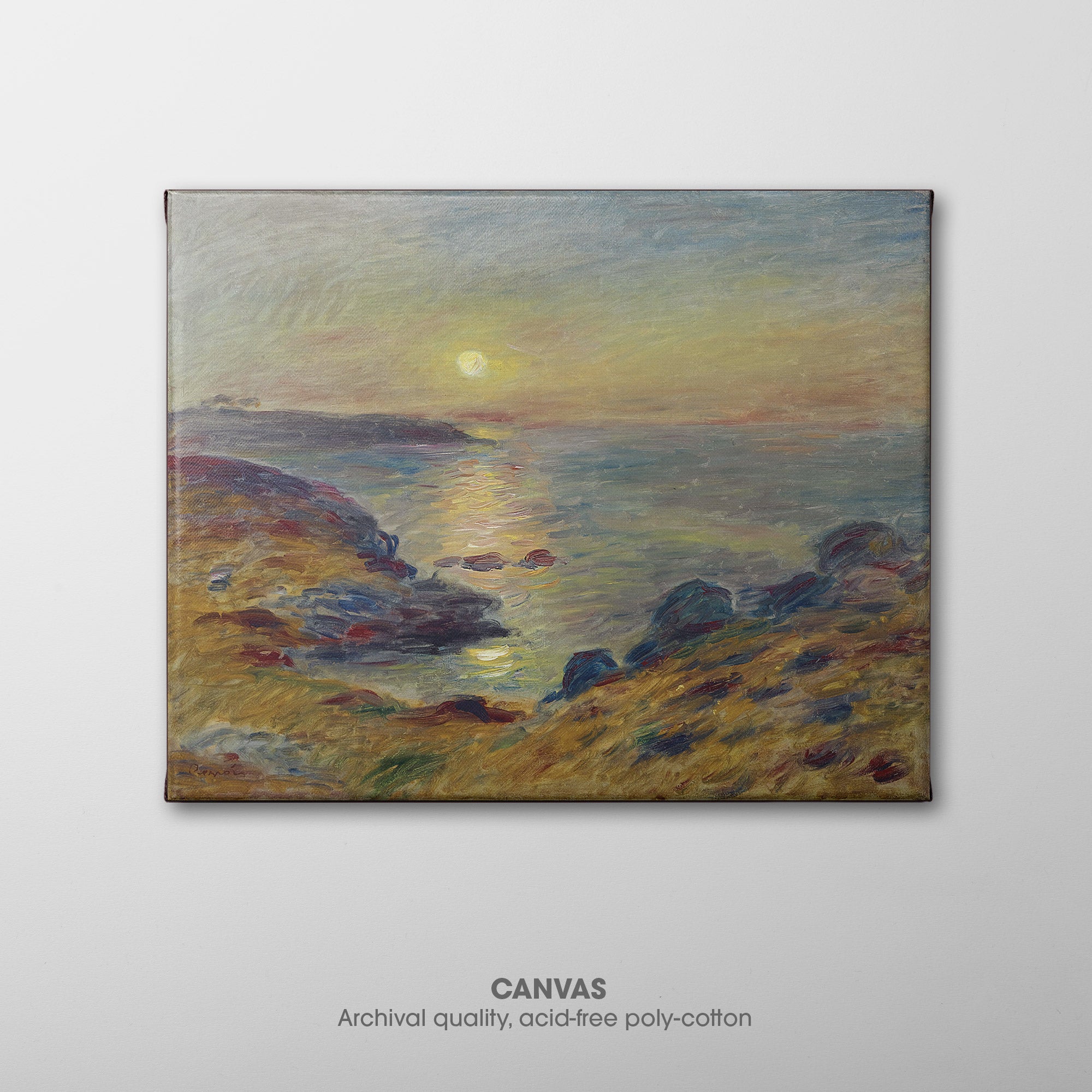
 Sunset at Douarnenez (1883, Coucher de soleil à Douarnenez) by Pierre-Auguste Renoir depicts the setting sun off the Breton coast in France. Reminiscent of Monet's Impression, Sunrise, Renoir displays a strong impressionistic influence, capturing a scene of the natural world in a ➵
Sunset at Douarnenez (1883, Coucher de soleil à Douarnenez) by Pierre-Auguste Renoir depicts the setting sun off the Breton coast in France. Reminiscent of Monet's Impression, Sunrise, Renoir displays a strong impressionistic influence, capturing a scene of the natural world in a ➵◰ Canvas Reproductions
⧈ Framed Art Prints -
Place de la Trinité ☱ Renoir ☵ Canvas

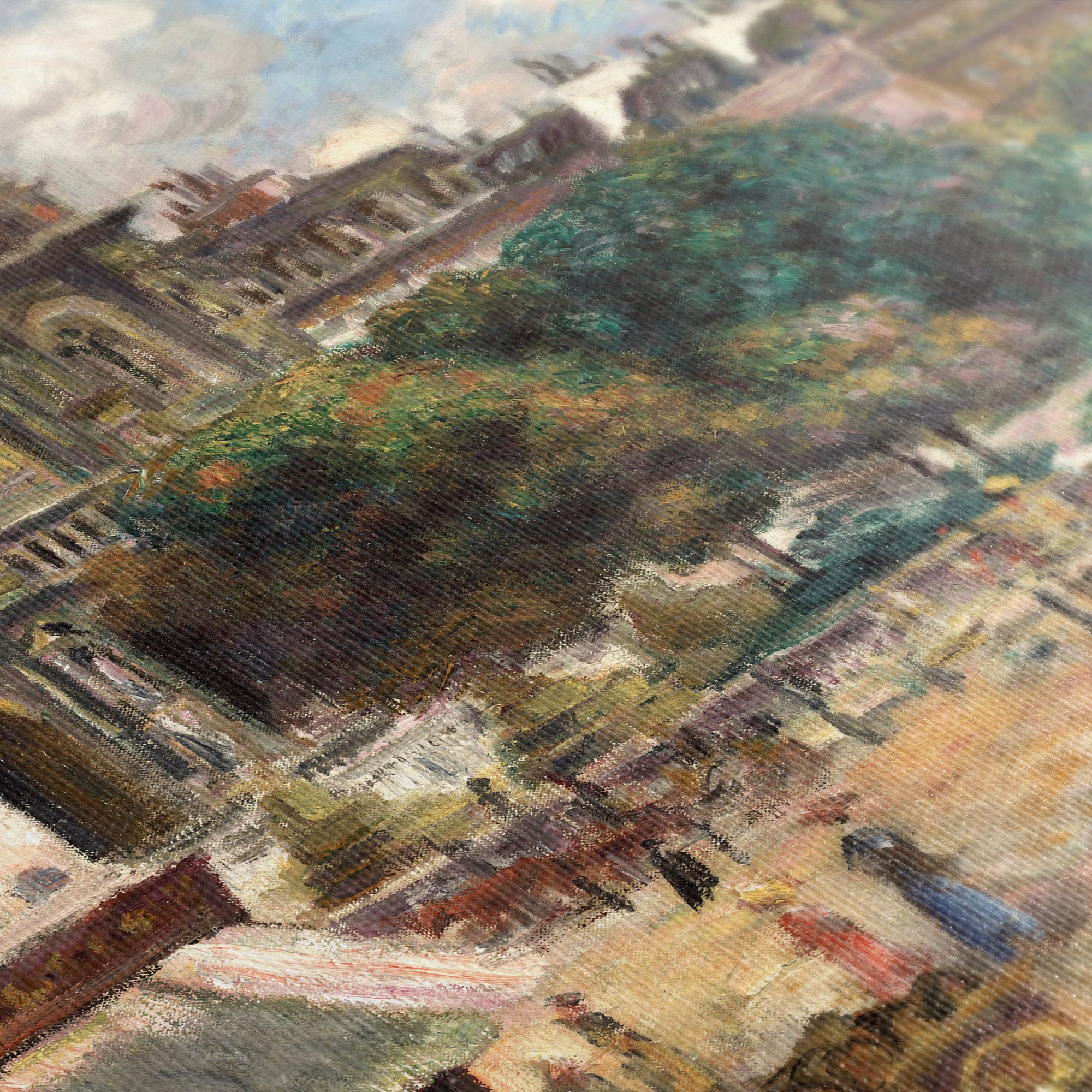 Place de la Trinité (1893, Trinity Square) by Pierre-Auguste Renoir depicts the busy streets and cityscape in front of the Église de la Sainte-Trinité (Church of the Holy Trinity), as seen from the rue Morlot, with the church obscured on the left. ➵
Place de la Trinité (1893, Trinity Square) by Pierre-Auguste Renoir depicts the busy streets and cityscape in front of the Église de la Sainte-Trinité (Church of the Holy Trinity), as seen from the rue Morlot, with the church obscured on the left. ➵◰ Canvas Reproductions
⧈ Framed Art Prints -
Piazza San Marco ☰ Renoir ☰ Canvas

 The Piazza San Marco, Venice (1881) by Pierre-Auguste Renoir depicts Saint Mark's Basilica (Basilica di San Marco) as well as the people and pigeons on the piazza. Renoir visited Venice on a tour of Italy, primarily painting famous sites, exploring the effects ➵
The Piazza San Marco, Venice (1881) by Pierre-Auguste Renoir depicts Saint Mark's Basilica (Basilica di San Marco) as well as the people and pigeons on the piazza. Renoir visited Venice on a tour of Italy, primarily painting famous sites, exploring the effects ➵◰ Canvas Reproductions
⧈ Framed Art Prints -
Landscape, Yellow Tree ☱ Renoir ☲ Canvas
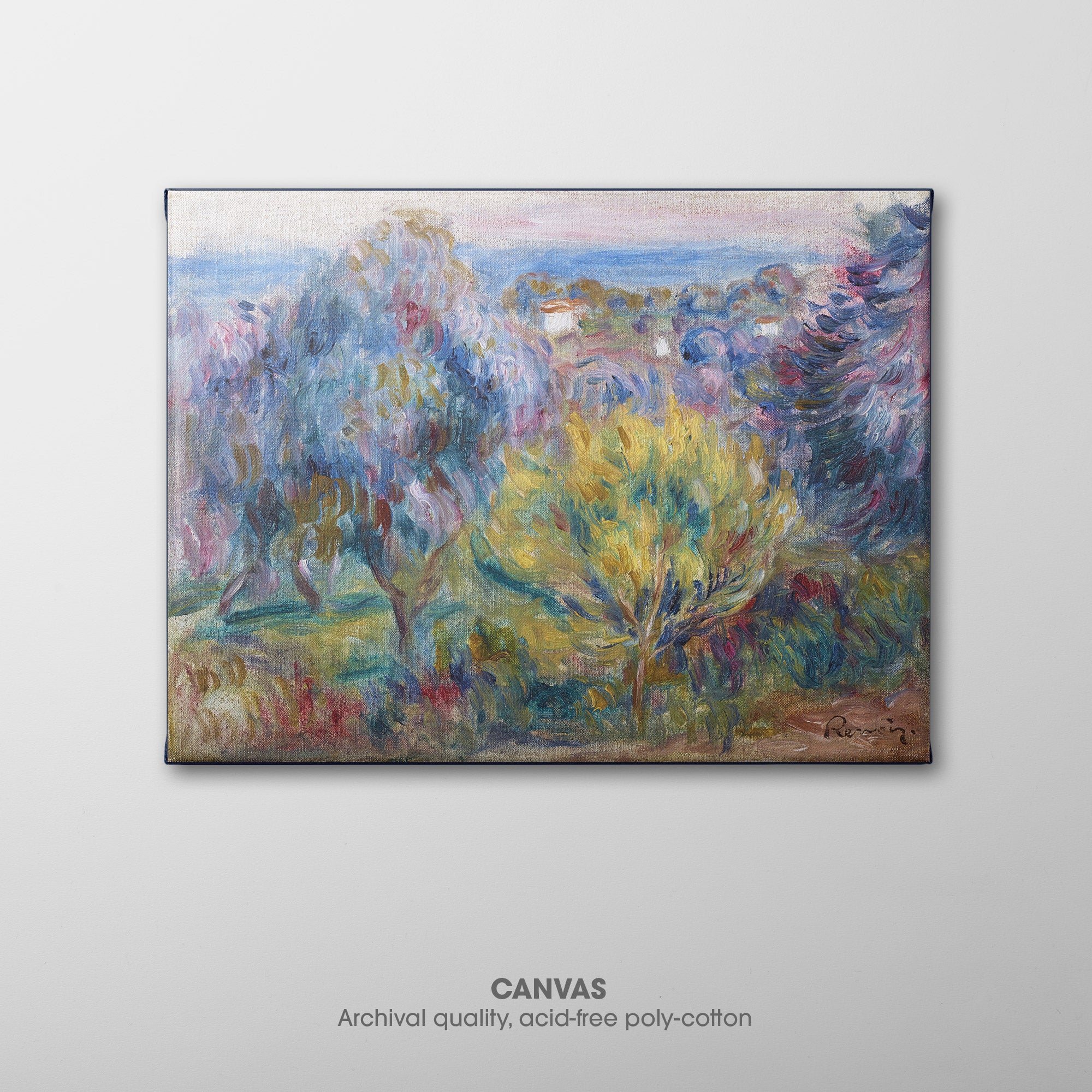
 Landscape, Yellow Tree in the foreground and Sea background in the South (1914, Paysage, arbre jaune au premier plan et fond de mer dans le Midi) by Pierre-Auguste Renoir depicts the countryside surrounding Renoir's newly built home at Les Collettes on the ➵
Landscape, Yellow Tree in the foreground and Sea background in the South (1914, Paysage, arbre jaune au premier plan et fond de mer dans le Midi) by Pierre-Auguste Renoir depicts the countryside surrounding Renoir's newly built home at Les Collettes on the ➵◰ Canvas Reproductions
⧈ Framed Art Prints -
Shaded Path ☷ Renoir ☶ Canvas
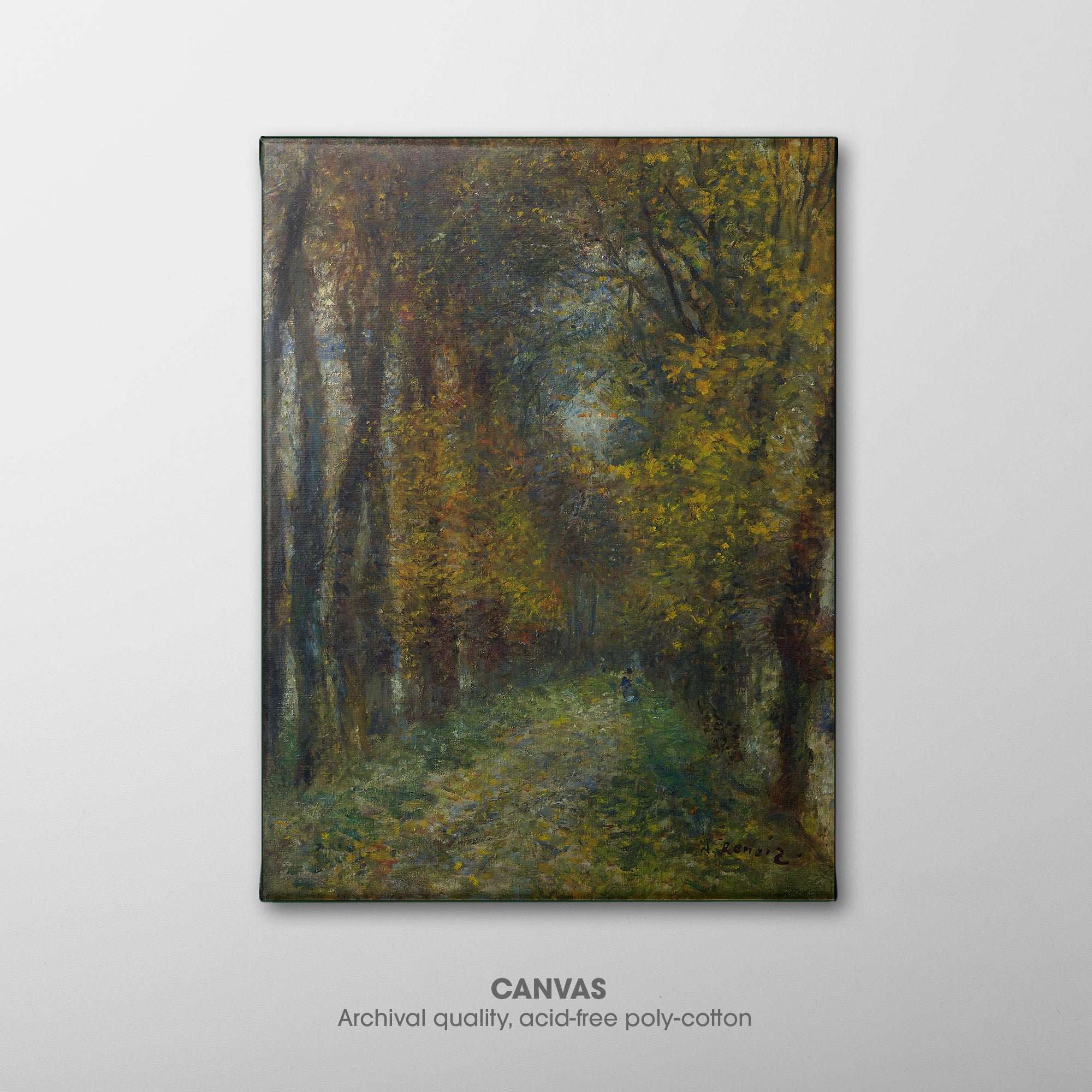
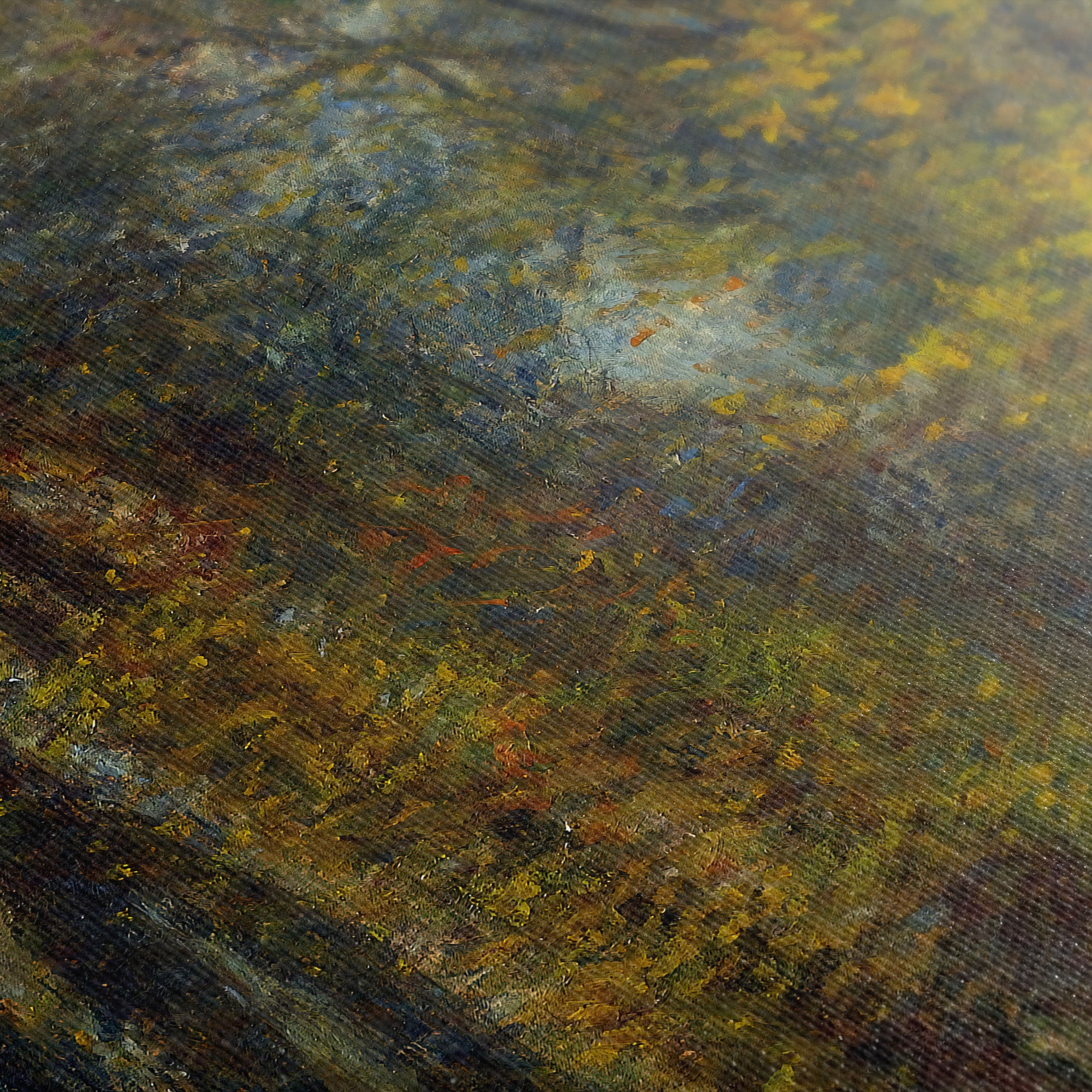 Shaded Path (1872, Le chemin ombragé) by Pierre-Auguste Renoir depicts a painter at work in the forest of Fontainebleau. Paths with overhanging trees allowed painters to explore light and shadow by rendering the effects of sunlight through thick foliage. The forest of ➵
Shaded Path (1872, Le chemin ombragé) by Pierre-Auguste Renoir depicts a painter at work in the forest of Fontainebleau. Paths with overhanging trees allowed painters to explore light and shadow by rendering the effects of sunlight through thick foliage. The forest of ➵◰ Canvas Reproductions
⧈ Framed Art Prints -
Eiffel Tower ☰ Seurat ☴ Canvas
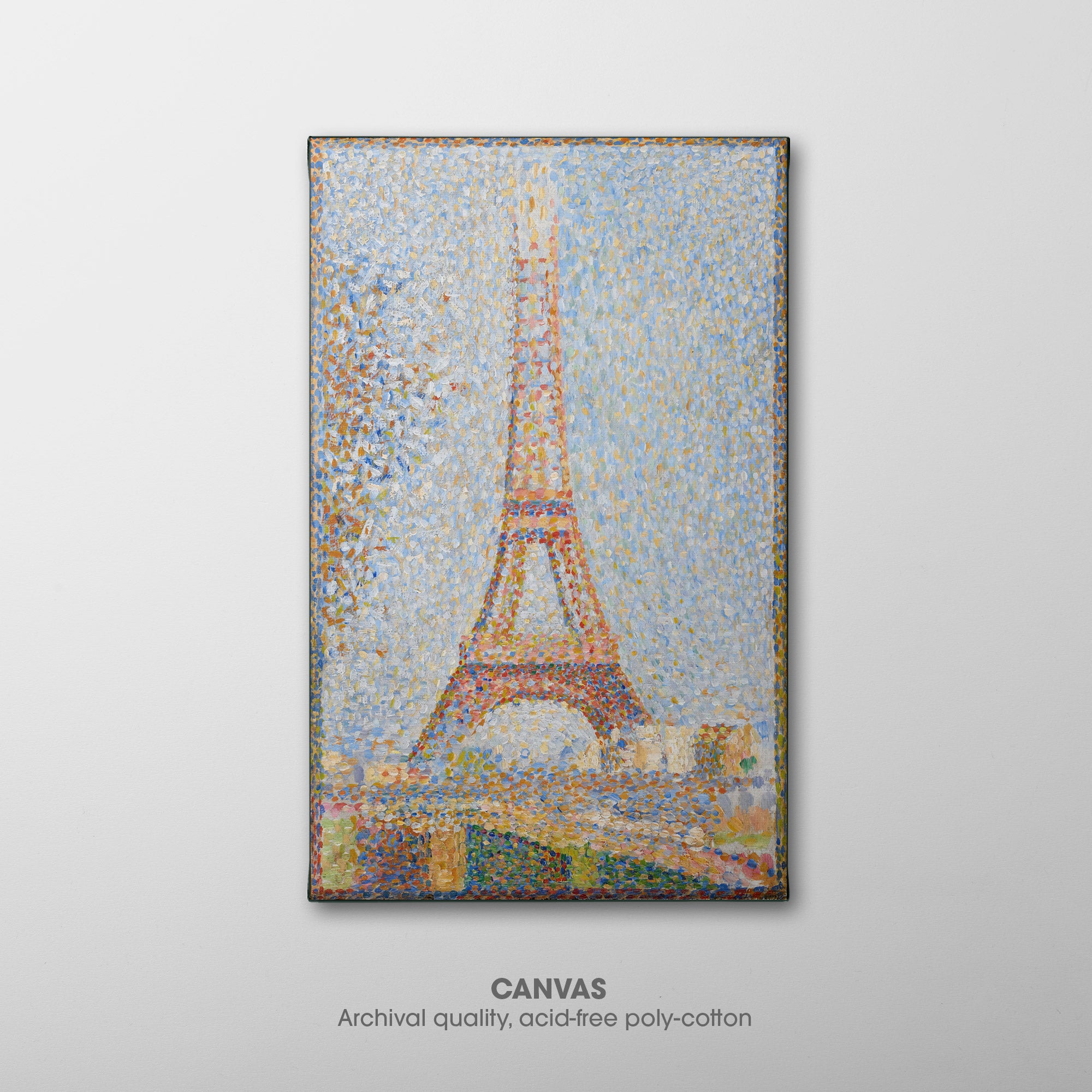
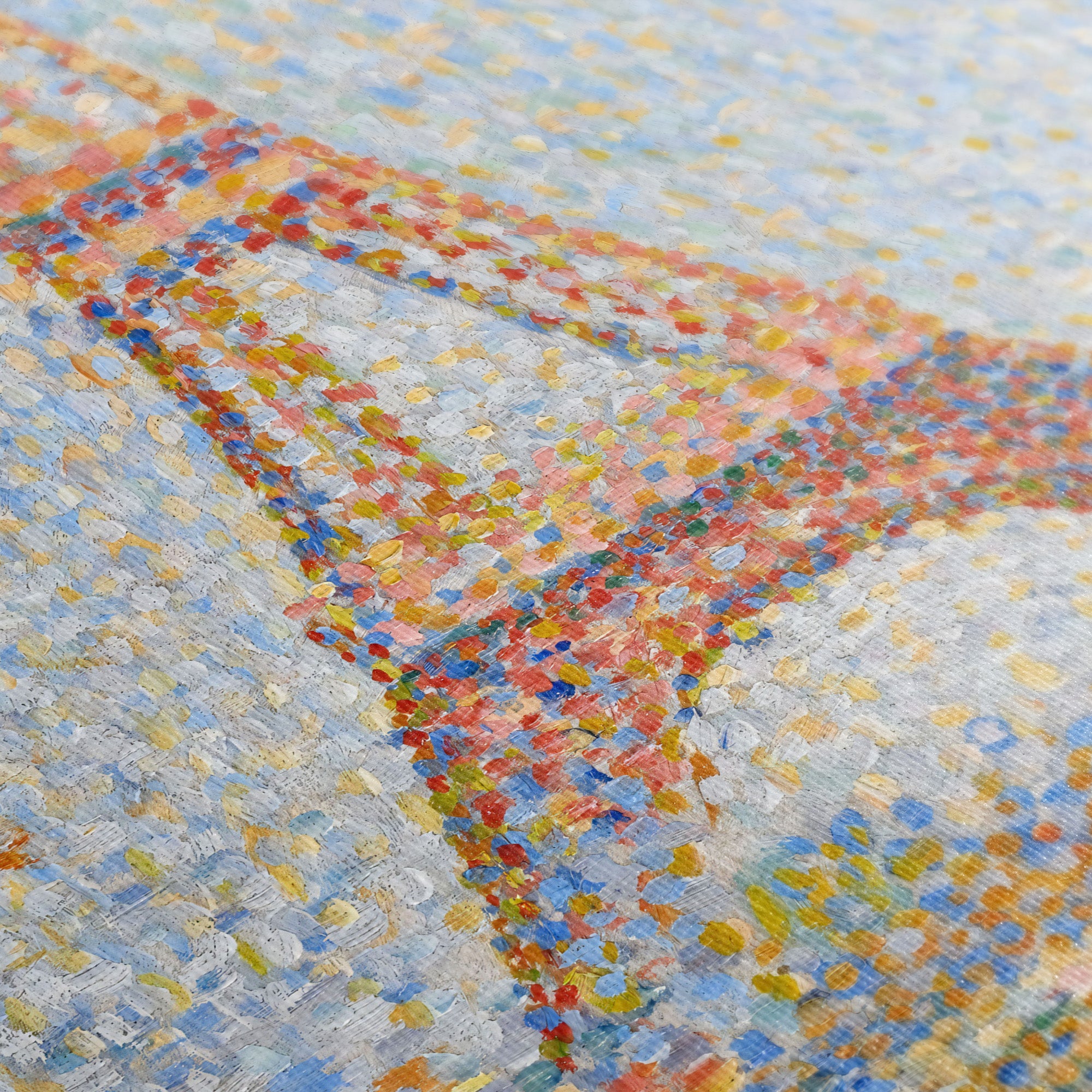 Eiffel Tower (1889) by Georges Seurat is one of about seventy oil studies, or "croquetons" (little sketches), he made on small wood panels. The panels were easily transported and ideal for outdoor painting. Here his subject is the tower built by Gustave ➵
Eiffel Tower (1889) by Georges Seurat is one of about seventy oil studies, or "croquetons" (little sketches), he made on small wood panels. The panels were easily transported and ideal for outdoor painting. Here his subject is the tower built by Gustave ➵◰ Canvas Reproductions
⧈ Framed Art Prints -
Man Leaning on a Parapet ☲ Seurat ☴ Canvas
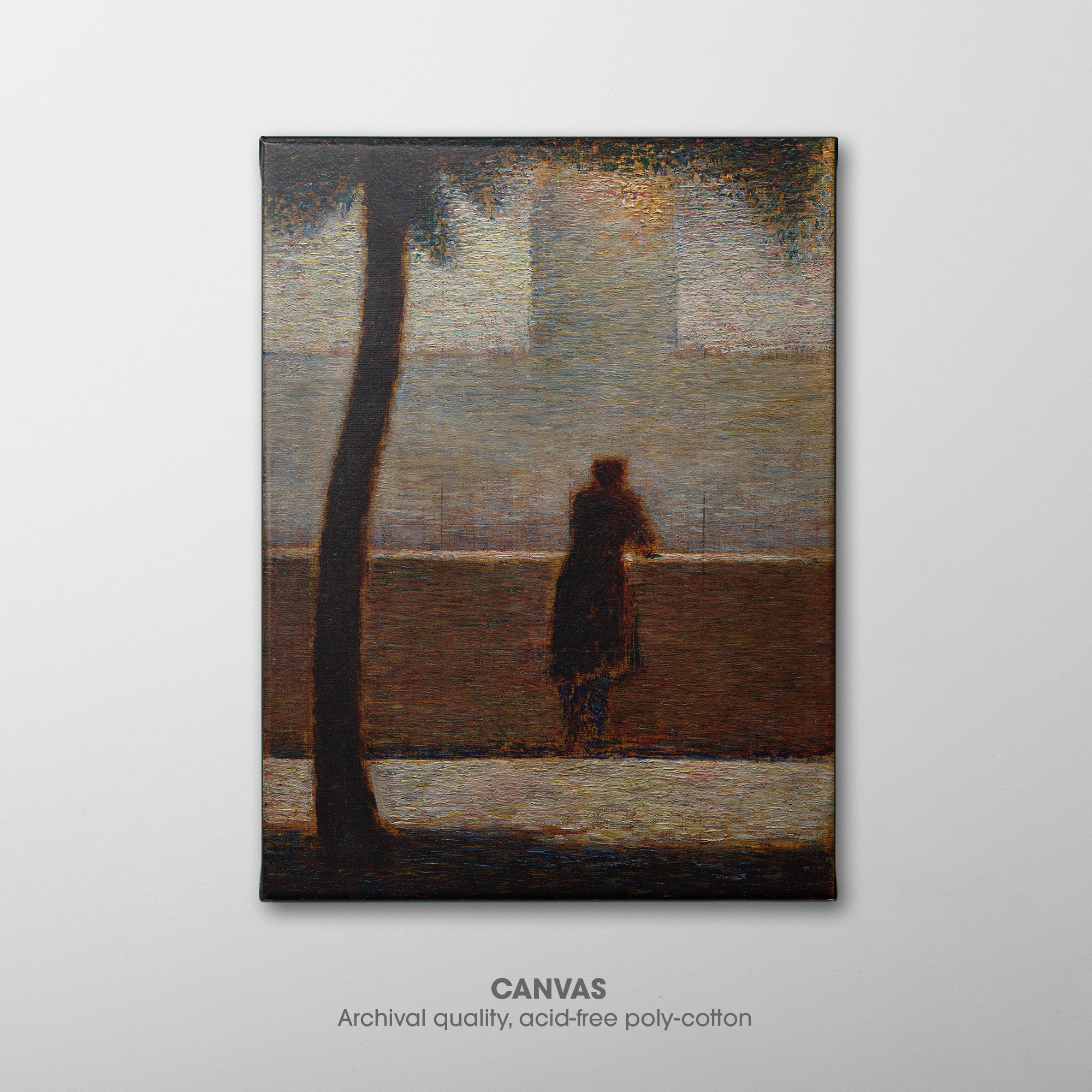
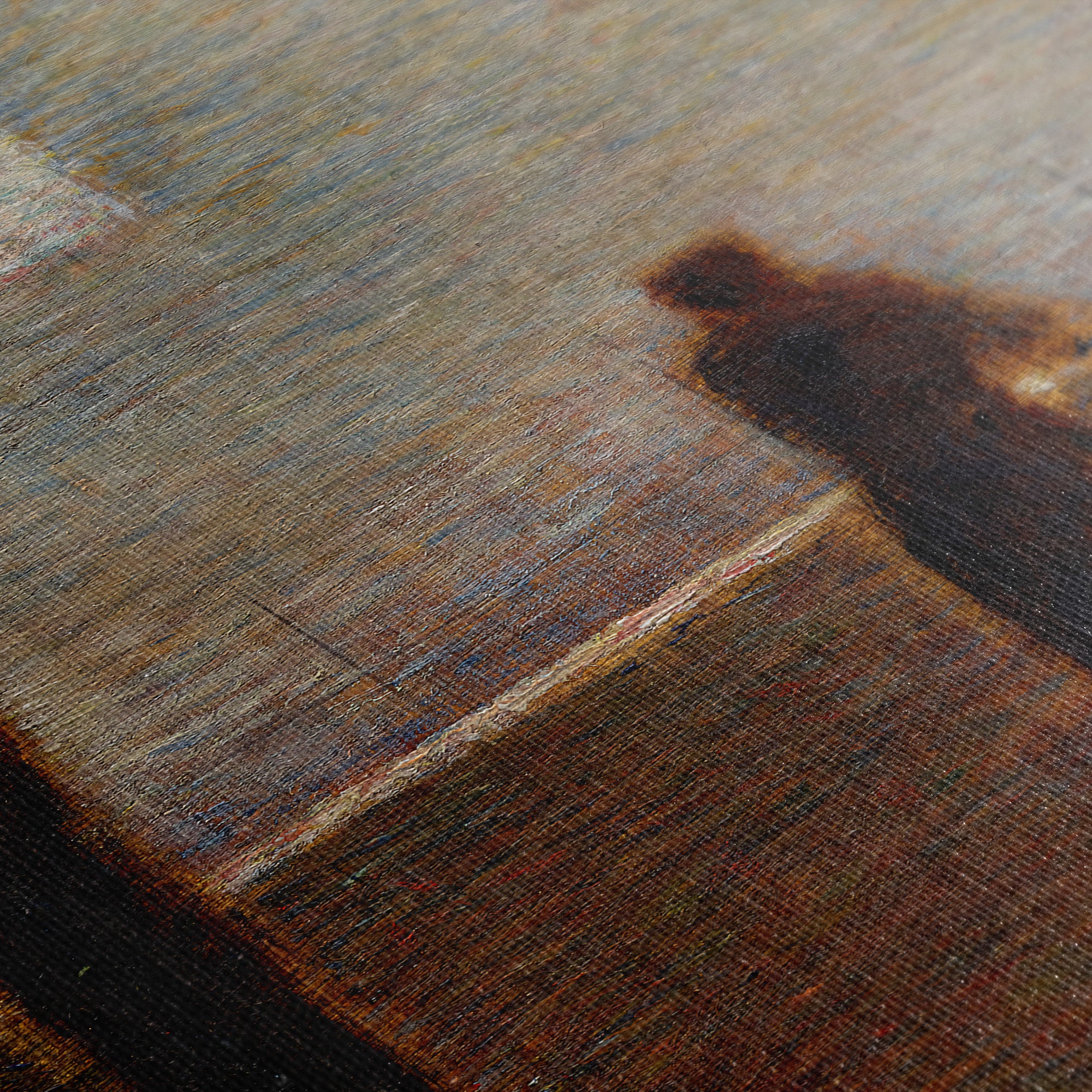 A Man Leaning on a Parapet (1881) by Georges Seurat appears as "panel no. 1." in the studio inventory made after his death in 1891 at age 31. As one of his earliest works, the composition reveals his talent for carefully calibrated ➵
A Man Leaning on a Parapet (1881) by Georges Seurat appears as "panel no. 1." in the studio inventory made after his death in 1891 at age 31. As one of his earliest works, the composition reveals his talent for carefully calibrated ➵◰ Canvas Reproductions
⧈ Framed Art Prints -
View of the Seine ☱ Seurat ☵ Canvas
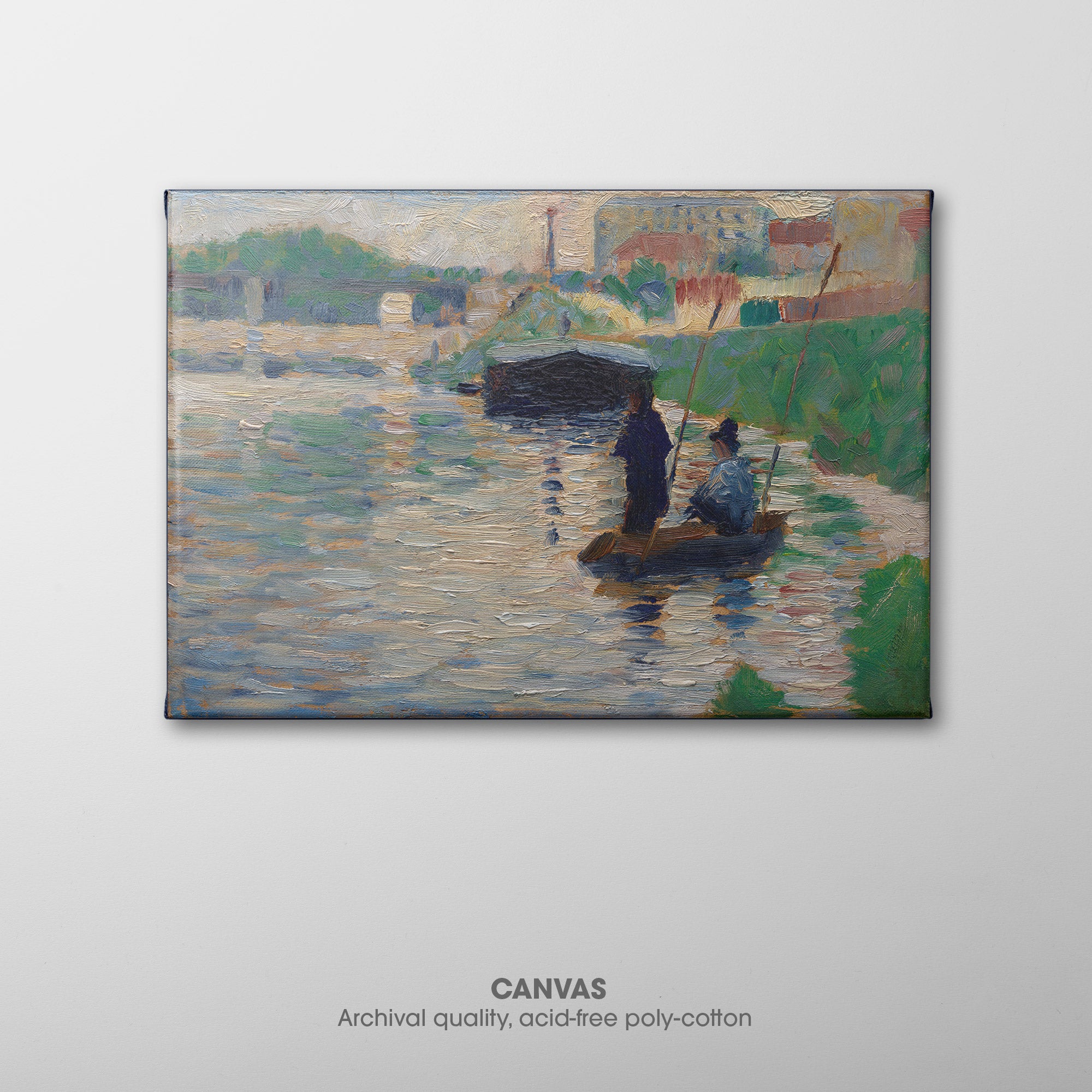
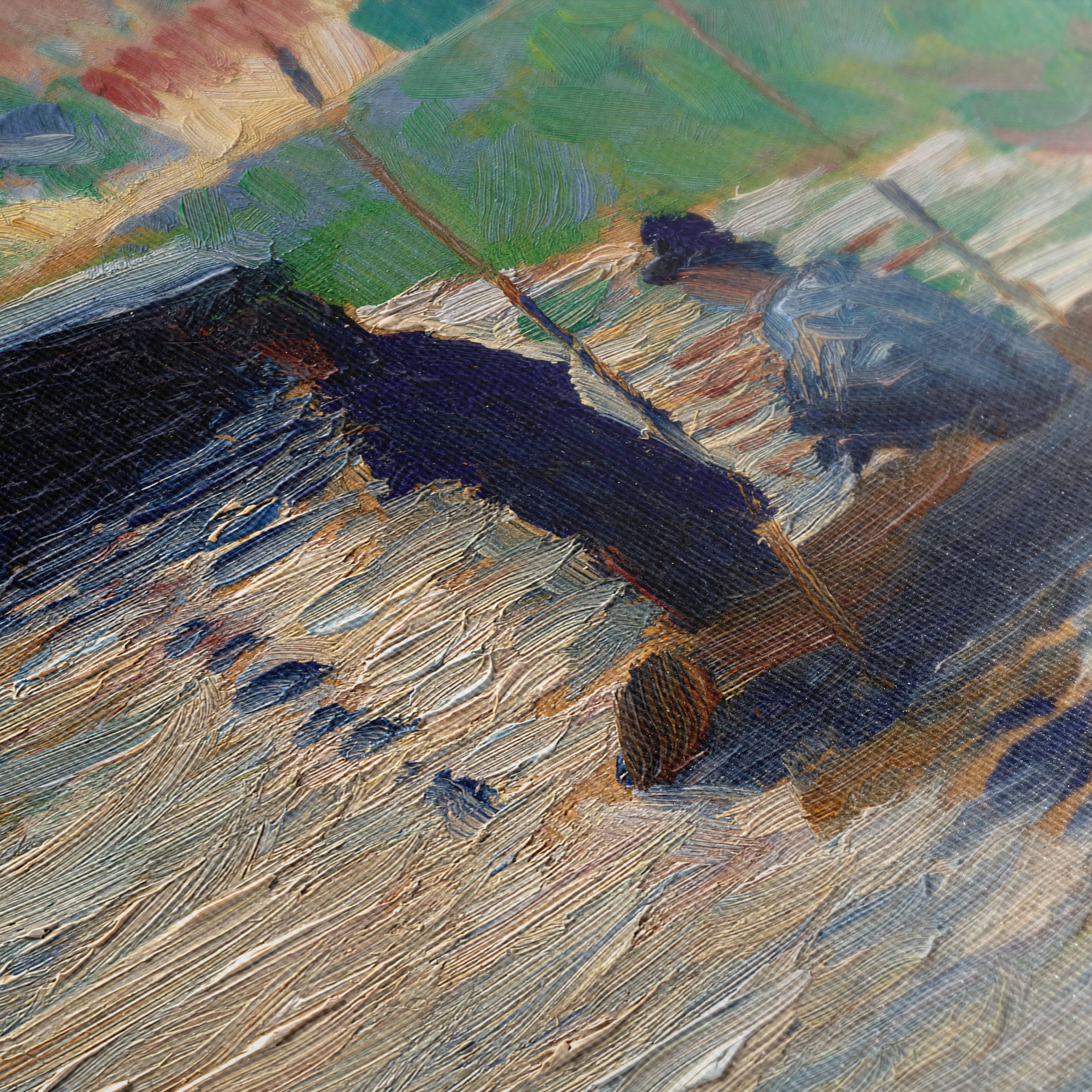 View of the Seine (1883) by Georges Seurat is one of about seventy oil studies on small wood panels, which he called croquetons (little sketches), he made at the beginning of his career. The durable boards were easily transported and held, making ➵
View of the Seine (1883) by Georges Seurat is one of about seventy oil studies on small wood panels, which he called croquetons (little sketches), he made at the beginning of his career. The durable boards were easily transported and held, making ➵◰ Canvas Reproductions
⧈ Framed Art Prints -
Circus Sideshow ☲ Seurat ☳ Canvas
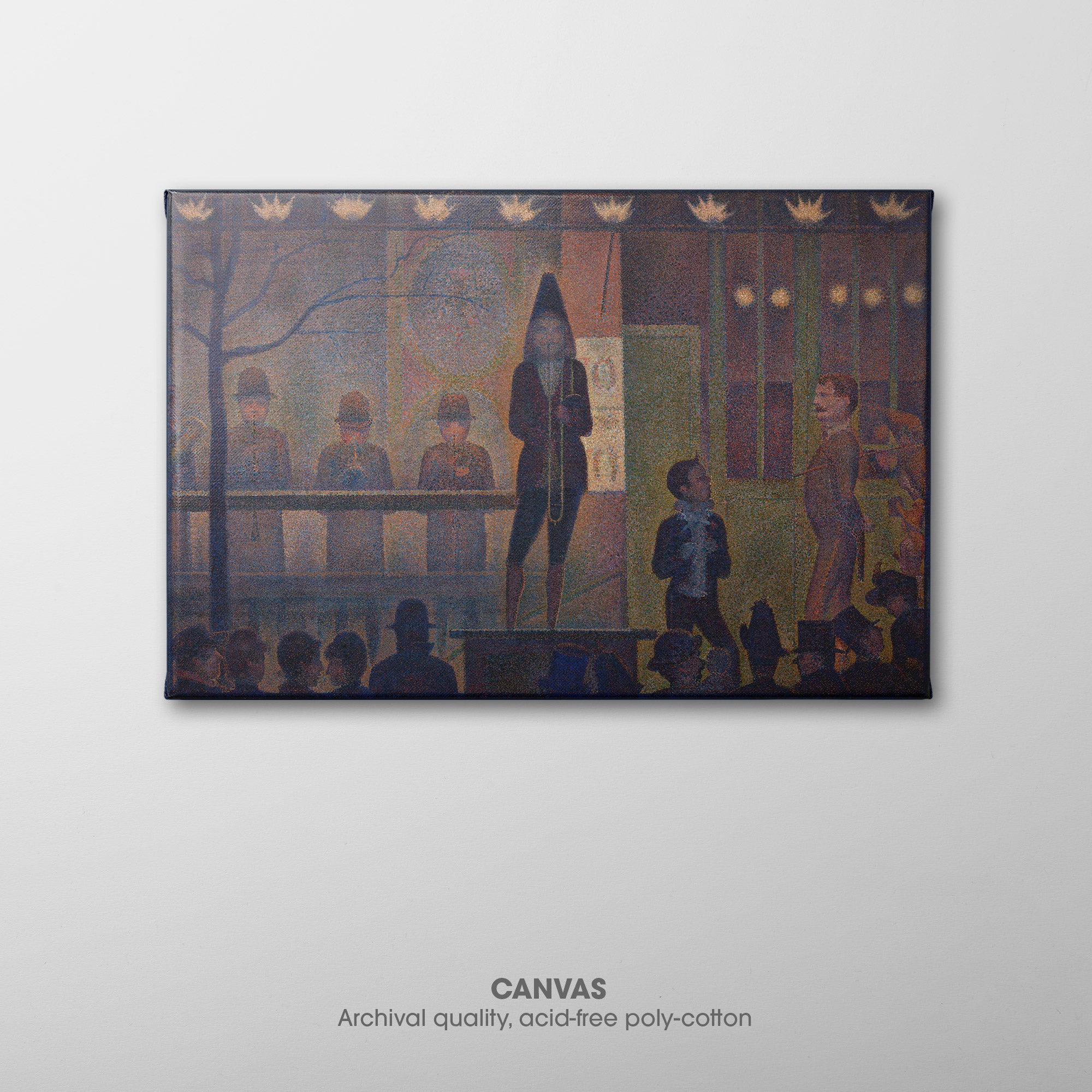
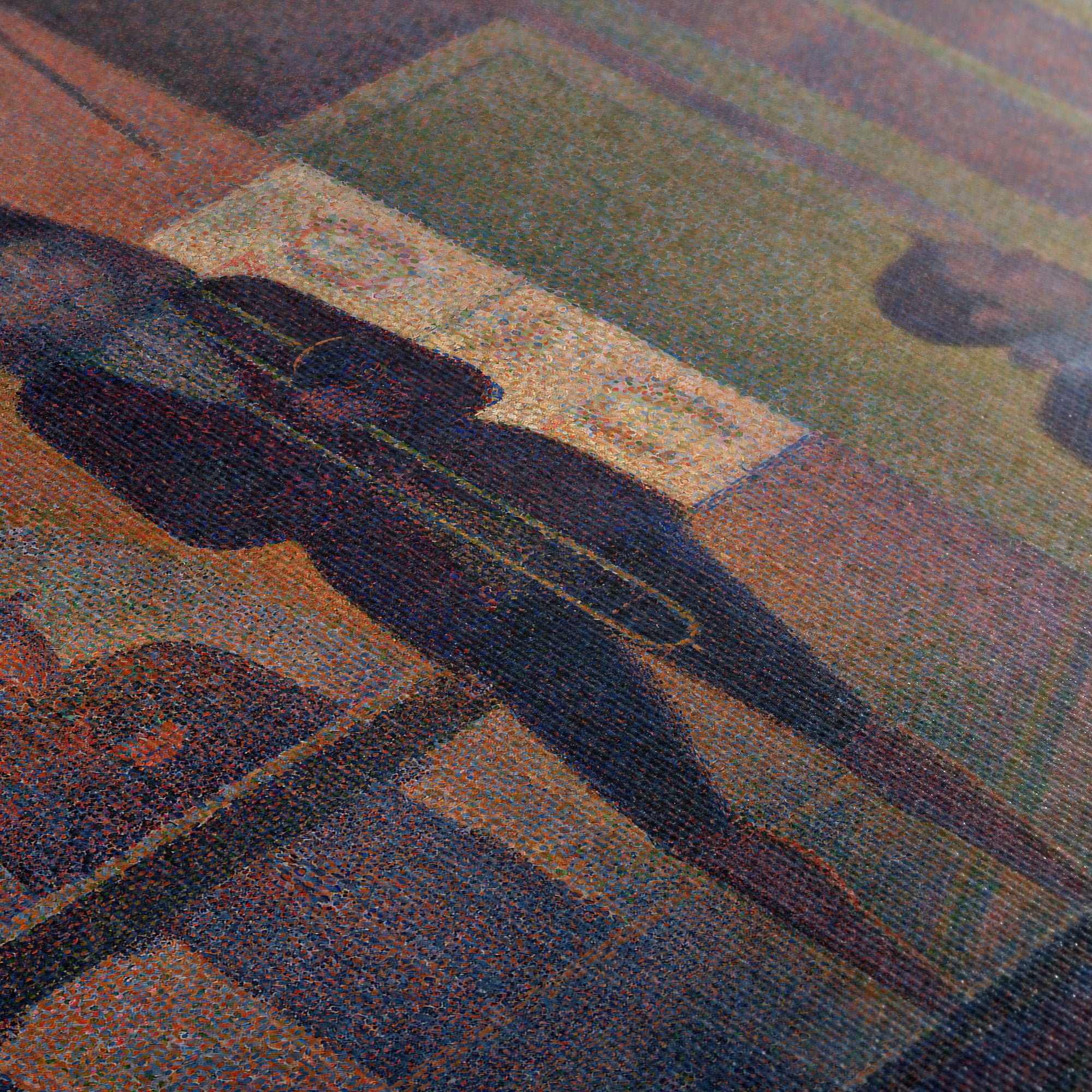 Circus Sideshow (1888, Parade de cirque) by Georges Seurat is his first nocturnal painting and the first to depict popular entertainment. Traveling circuses made seasonal appearances in Paris, where free sideshows were staged outside the circus tent to sell tickets. This painting ➵
Circus Sideshow (1888, Parade de cirque) by Georges Seurat is his first nocturnal painting and the first to depict popular entertainment. Traveling circuses made seasonal appearances in Paris, where free sideshows were staged outside the circus tent to sell tickets. This painting ➵◰ Canvas Reproductions
⧈ Framed Art Prints -
Bathers at Asnières ☷ Seurat ☱ Canvas
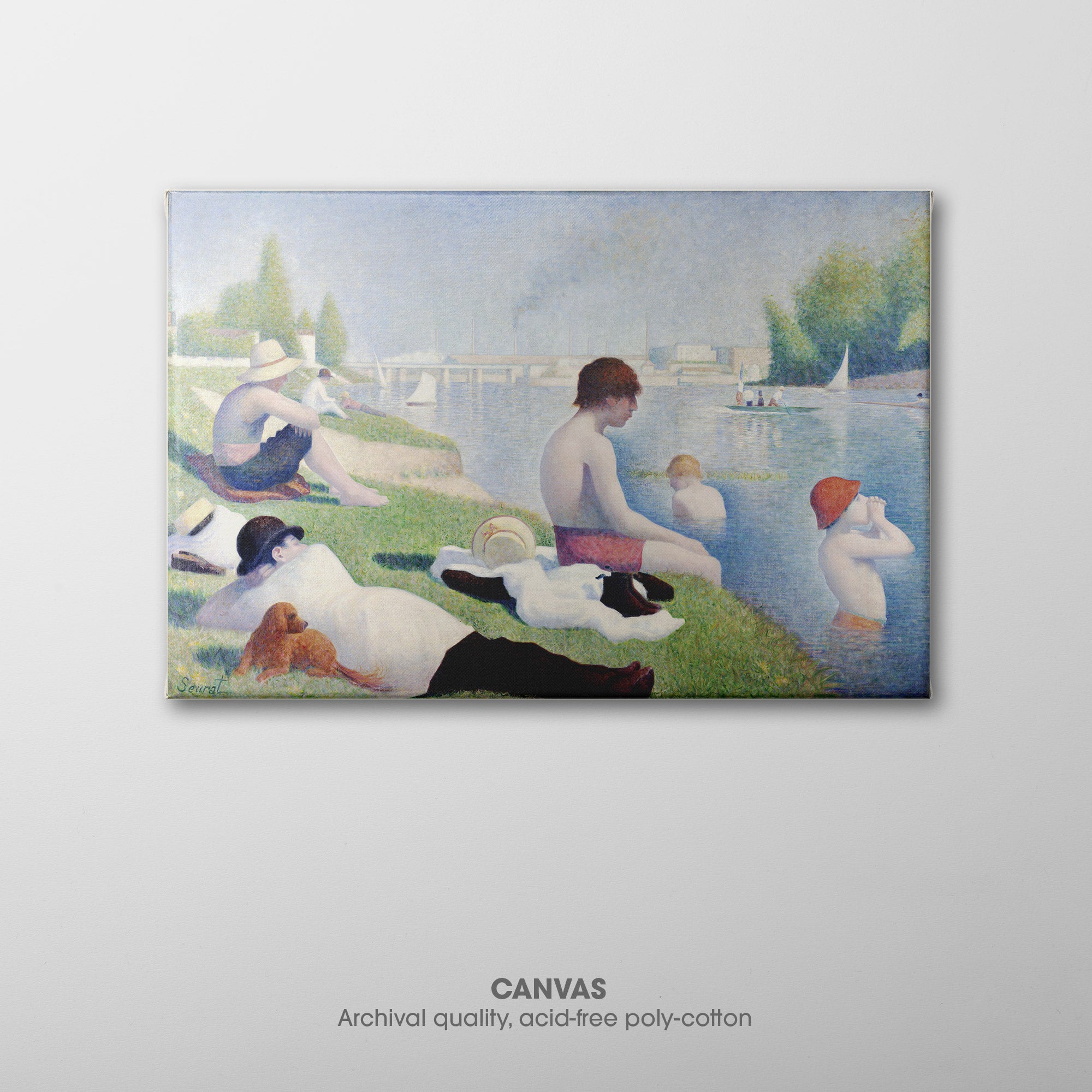
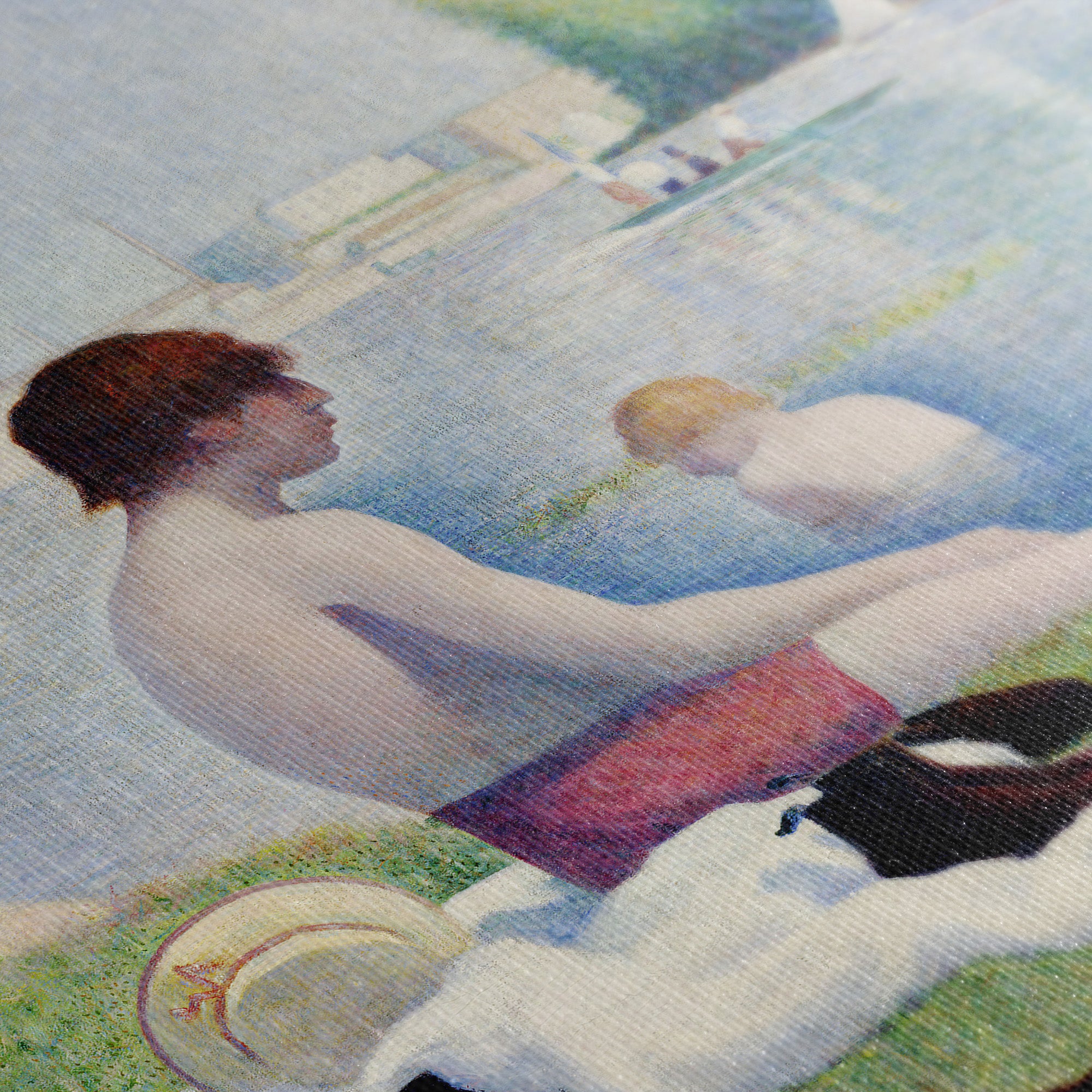 Bathers at Asnières (1884, Une Baignade, Asnières) by Georges Seurat depicts bathers in the Seine at Asnières/ Courbevoie, about four miles from the center of Paris. Opposite is the island of la Grande Jatte, the east tip of which is shown as ➵
Bathers at Asnières (1884, Une Baignade, Asnières) by Georges Seurat depicts bathers in the Seine at Asnières/ Courbevoie, about four miles from the center of Paris. Opposite is the island of la Grande Jatte, the east tip of which is shown as ➵◰ Canvas Reproductions
⧈ Framed Art Prints -
Vision after the Sermon ☵ Gauguin ☳ Canvas
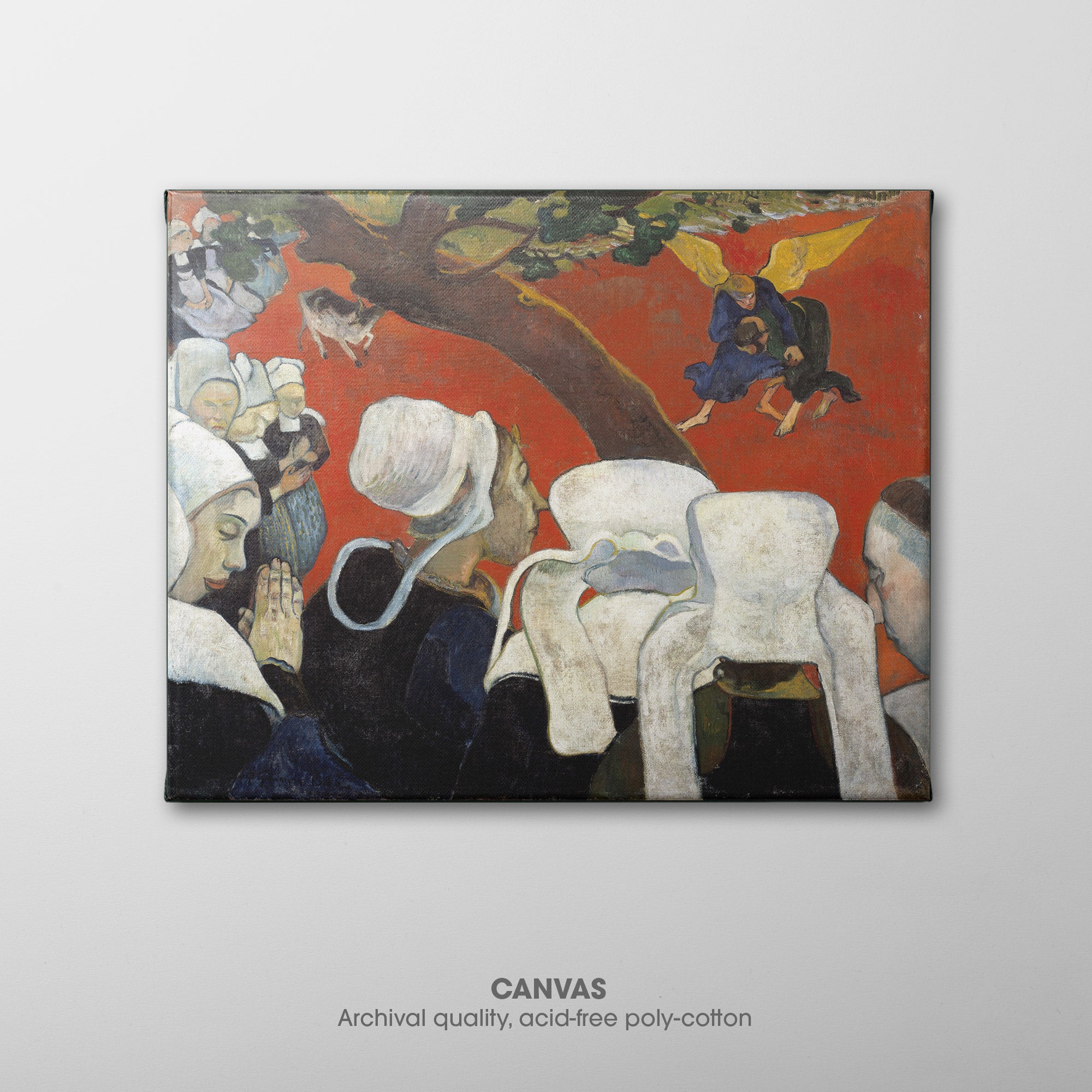
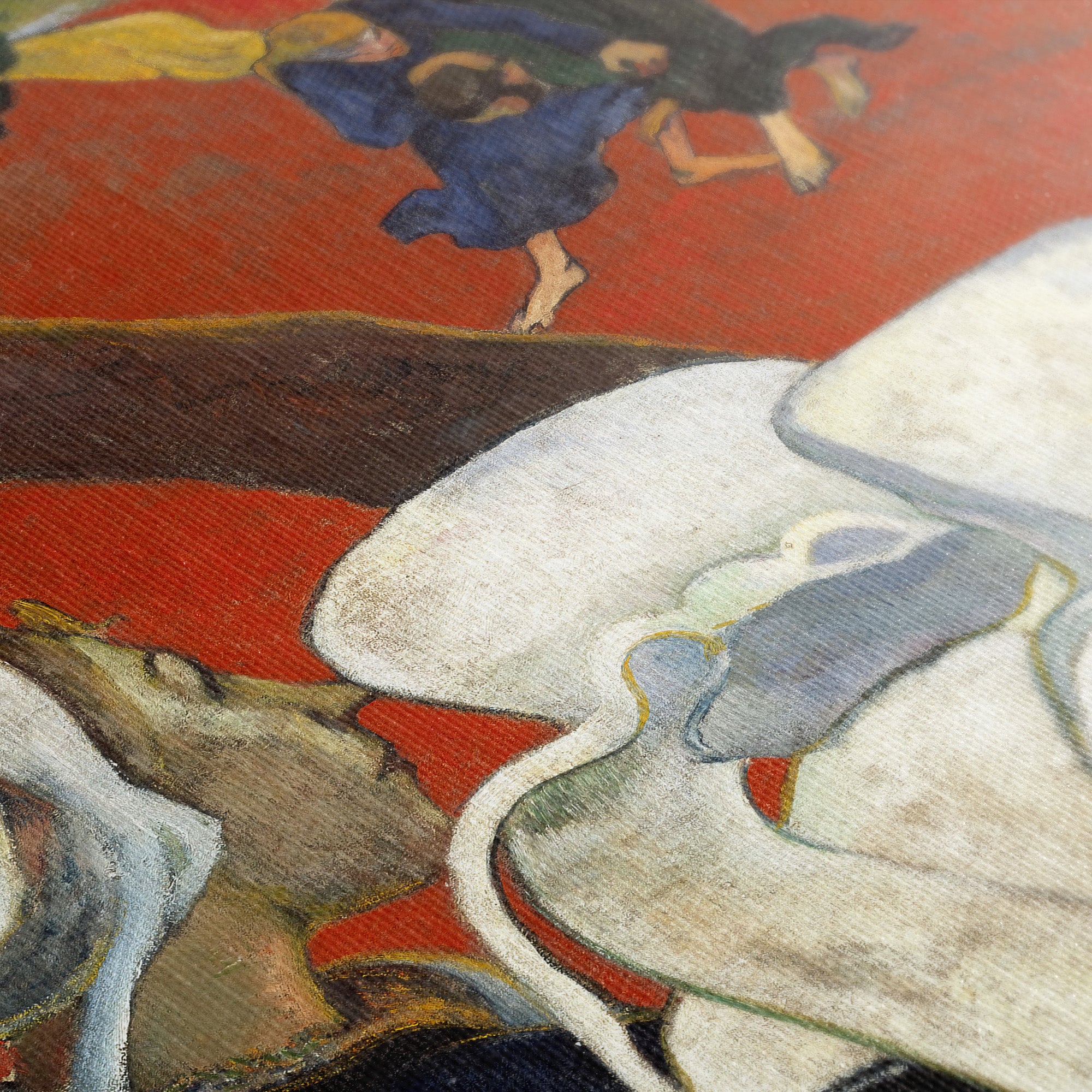 Vision after the Sermon (Jacob Wrestling with the Angel) (1888) by Paul Gauguin depicts a scene from the Bible in which Jacob wrestles an angel (Genesis 32:22-31), seen as a vision after a sermon in church by a group of Breton women ➵
Vision after the Sermon (Jacob Wrestling with the Angel) (1888) by Paul Gauguin depicts a scene from the Bible in which Jacob wrestles an angel (Genesis 32:22-31), seen as a vision after a sermon in church by a group of Breton women ➵◰ Canvas Reproductions
⧈ Framed Art Prints -
The Painter of Sunflowers ☰ Gauguin ☷ Canvas

 The Painter of Sunflowers (1888) by Paul Gauguin depicts Vincent van Gogh at work in front of a canvas and easel, painting a vase full of sunflowers sitting on a small round table. Gauguin and van Gogh stayed together in The Yellow ➵
The Painter of Sunflowers (1888) by Paul Gauguin depicts Vincent van Gogh at work in front of a canvas and easel, painting a vase full of sunflowers sitting on a small round table. Gauguin and van Gogh stayed together in The Yellow ➵◰ Canvas Reproductions
⧈ Framed Art Prints -
The Loss of Virginity ☳ Gauguin ☲ Canvas

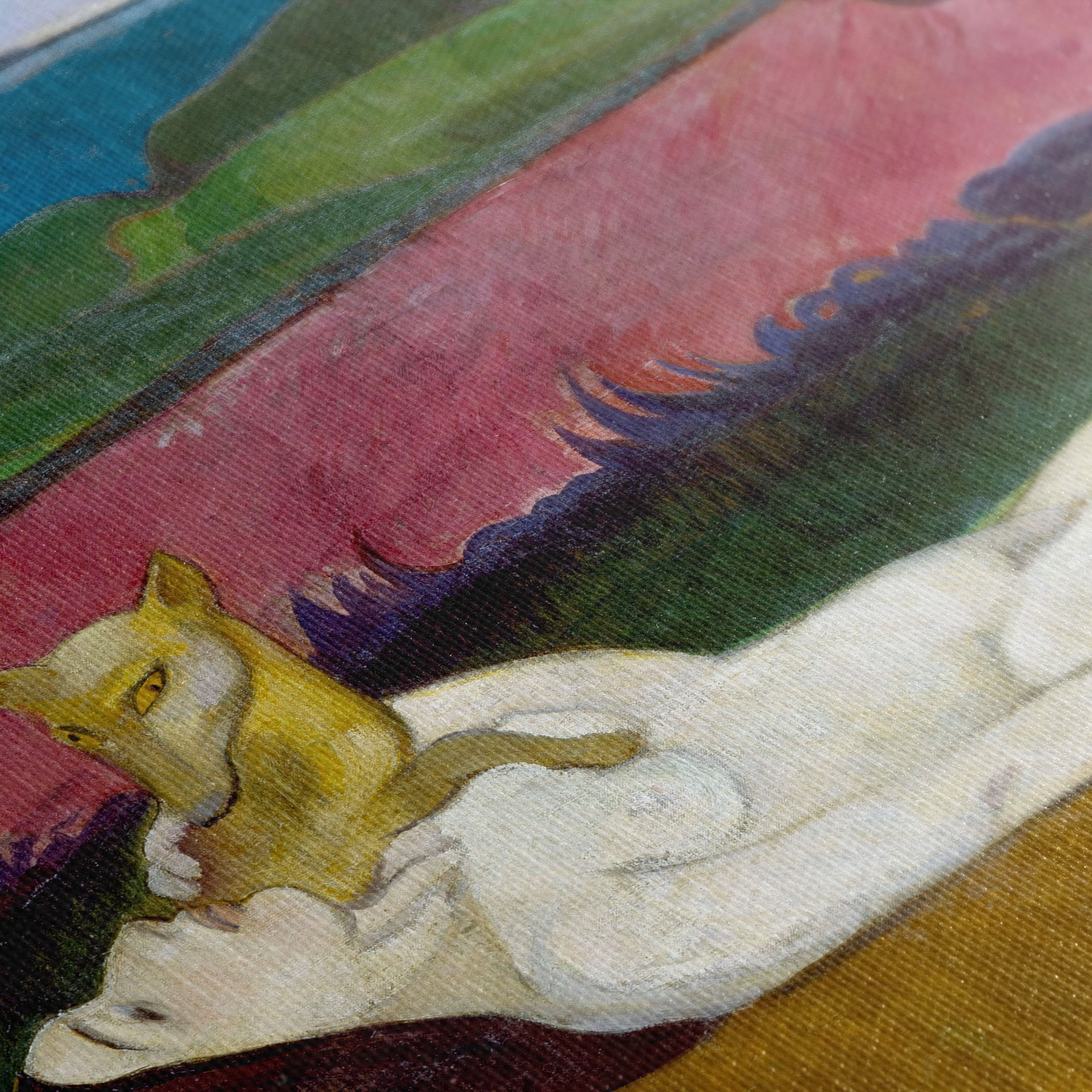 The Loss of Virginity (The Awakening of Spring) (1891, La Perte de Virginité, le Réveil du Printemps) by Paul Gauguin symbolically depicts a young woman's loss of virginity. The woman is laying naked in a Breton field overlooking the ocean, plucked flower ➵
The Loss of Virginity (The Awakening of Spring) (1891, La Perte de Virginité, le Réveil du Printemps) by Paul Gauguin symbolically depicts a young woman's loss of virginity. The woman is laying naked in a Breton field overlooking the ocean, plucked flower ➵◰ Canvas Reproductions
⧈ Framed Art Prints -
In the Waves ☵ Gauguin ☷ Canvas
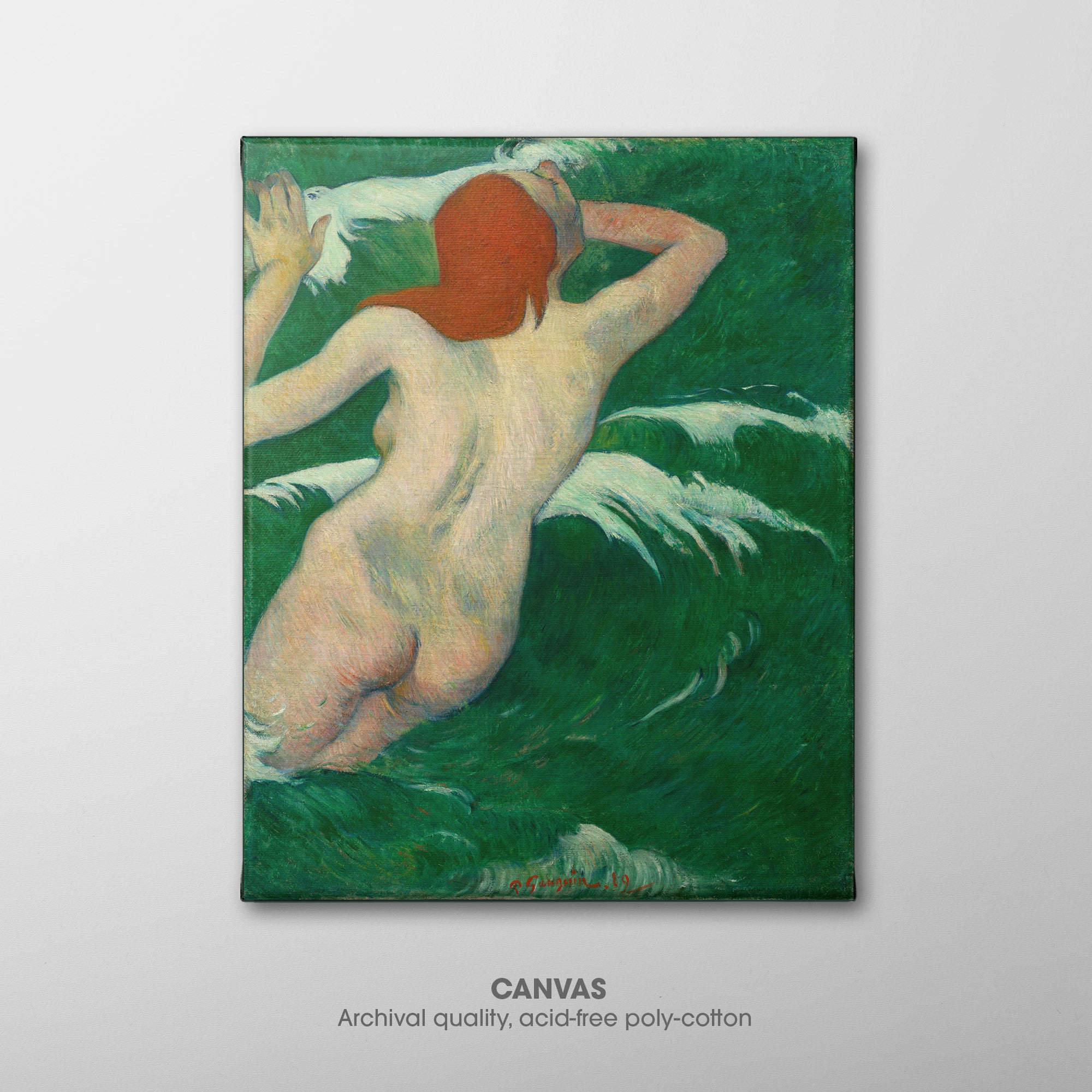
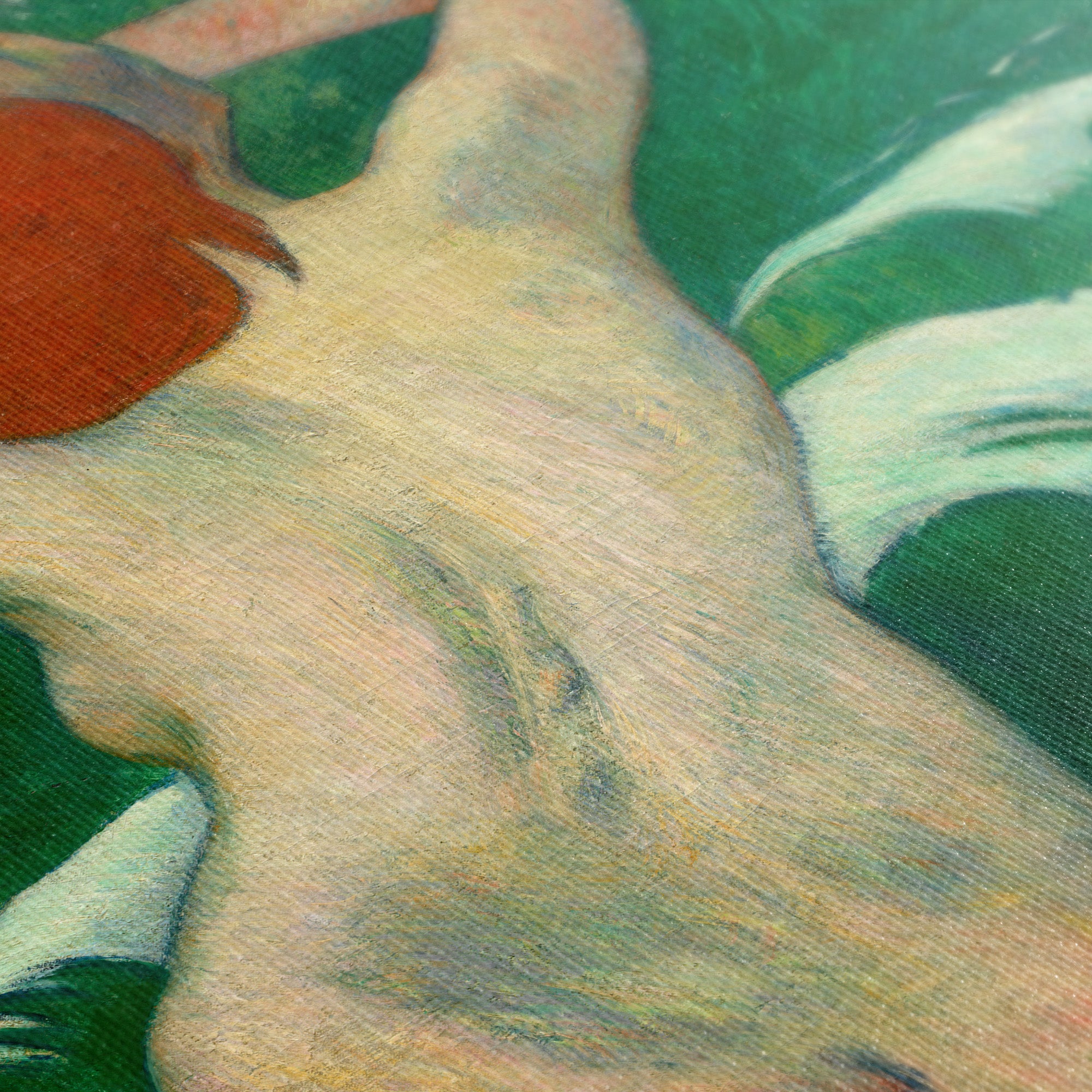 In the Waves (1889, Dans les Vagues) by Paul Gauguin was created during his time in a small coastal village called Pont-Aven where he sought to immerse himself in nature and escape modern civilization. It depicts a nude figure throwing herself into ➵
In the Waves (1889, Dans les Vagues) by Paul Gauguin was created during his time in a small coastal village called Pont-Aven where he sought to immerse himself in nature and escape modern civilization. It depicts a nude figure throwing herself into ➵◰ Canvas Reproductions
⧈ Framed Art Prints -
Two Tahitian Women ☷ Gauguin ☲ Canvas

 Two Tahitian Women (1899) by Paul Gauguin depicts two topless women, one holding mango blossoms, surrounded by green foliage. It reflects his fascination with Tahitian culture and his exploration of beauty and femininity. Evoking classical nudes and relying on gesture and facial ➵
Two Tahitian Women (1899) by Paul Gauguin depicts two topless women, one holding mango blossoms, surrounded by green foliage. It reflects his fascination with Tahitian culture and his exploration of beauty and femininity. Evoking classical nudes and relying on gesture and facial ➵◰ Canvas Reproductions
⧈ Framed Art Prints -
Reclining Nude ☲ Modigliani ☳ Canvas
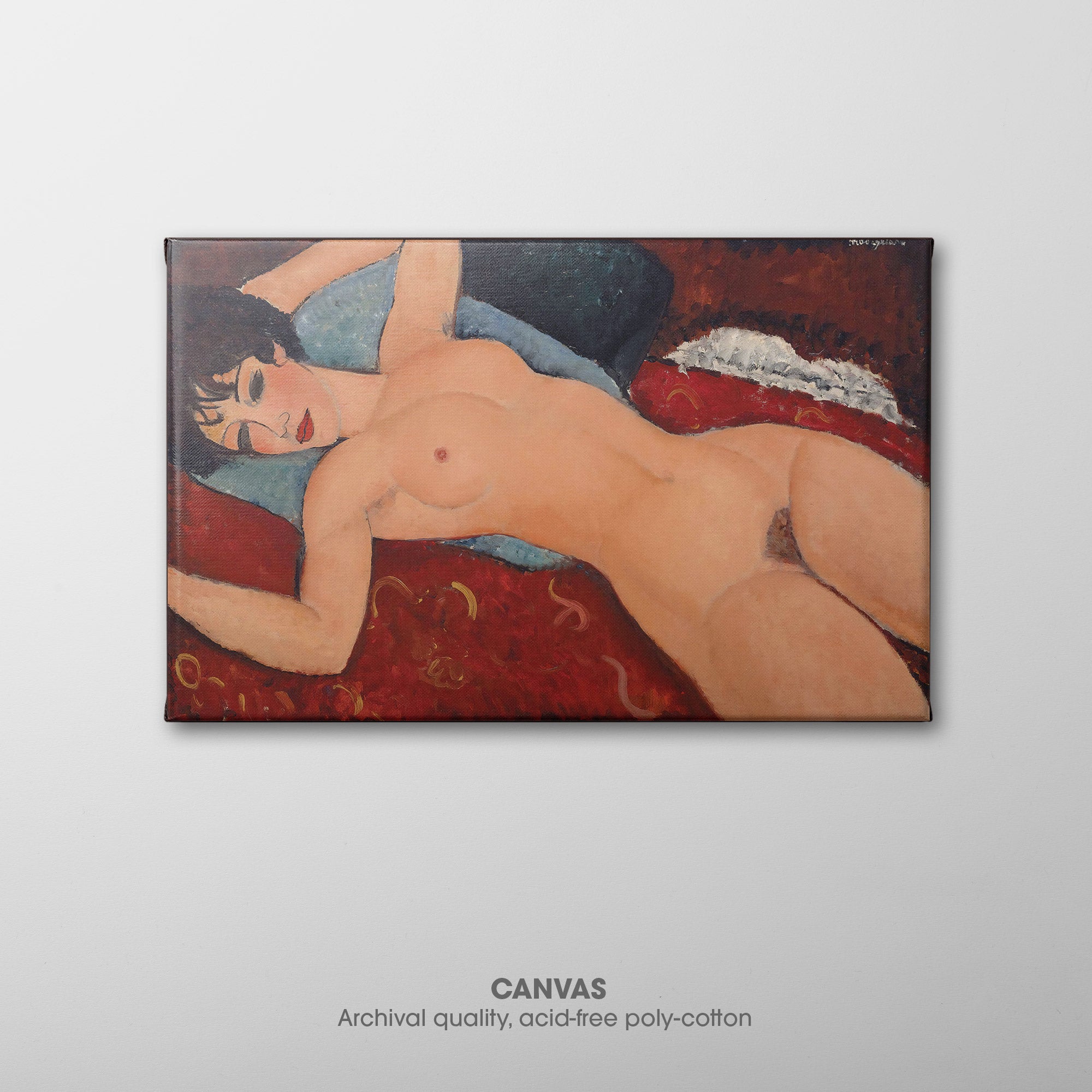
 Reclining Nude (1917, Nu couché) by Amedeo Modigliani, also known as Red Nude, is one of his most widely reproduced and exhibited paintings. One of a series of nudes that he painted in 1917, it was included in his first and only ➵
Reclining Nude (1917, Nu couché) by Amedeo Modigliani, also known as Red Nude, is one of his most widely reproduced and exhibited paintings. One of a series of nudes that he painted in 1917, it was included in his first and only ➵◰ Canvas Reproductions
⧈ Framed Art Prints -
Landscape in the South ☶ Modigliani ☷ Canvas
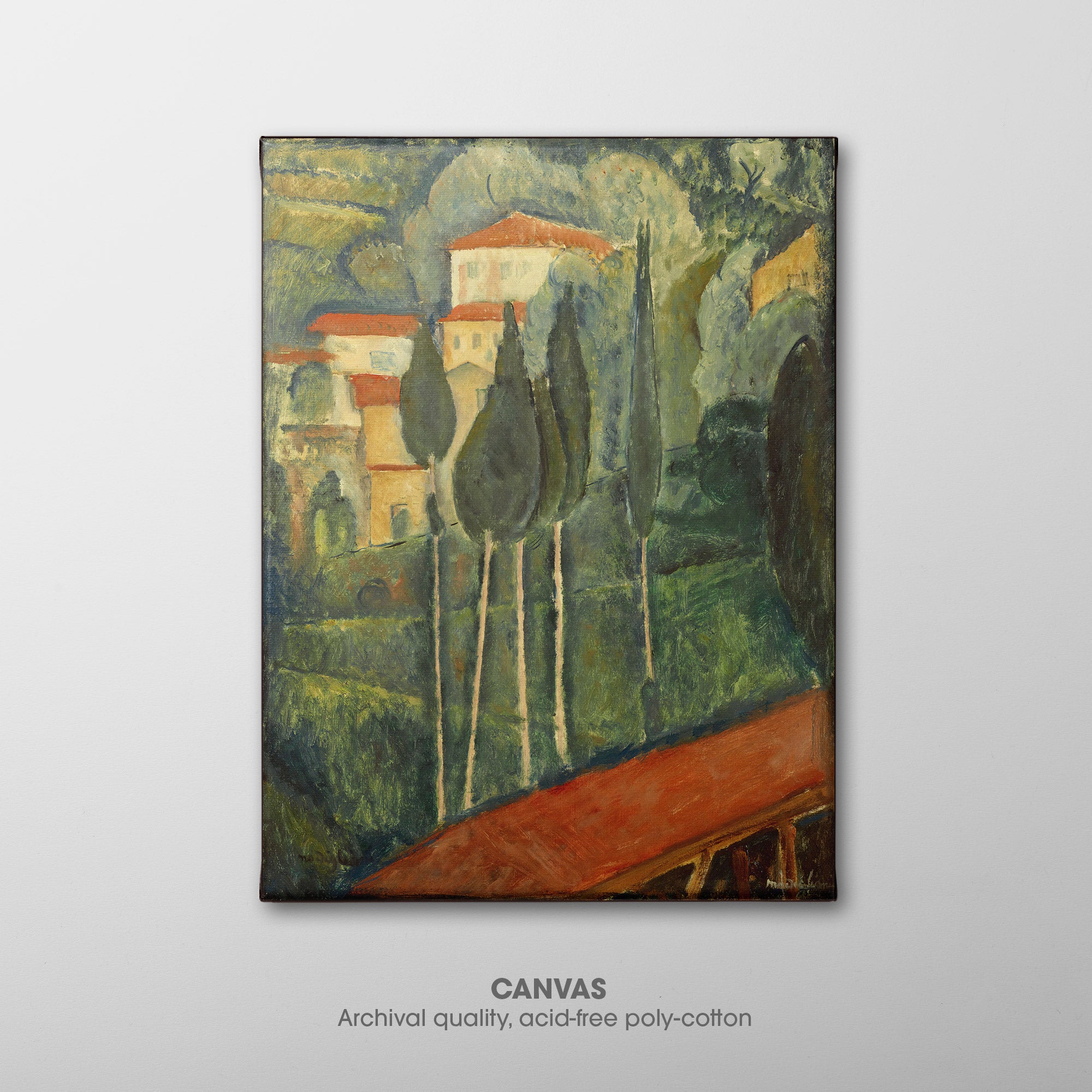
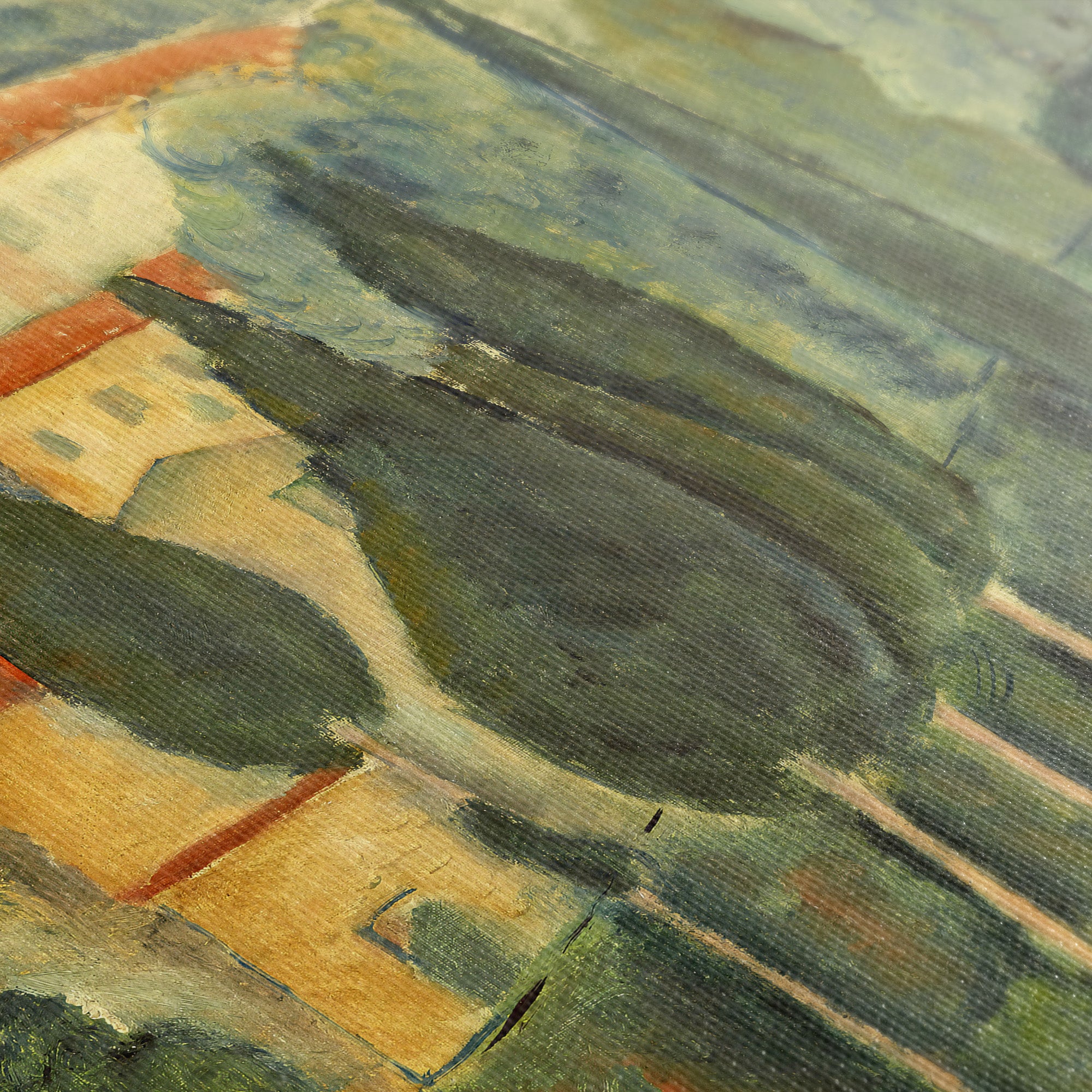 Landscape in the South (1919, Paysage dans le Midi) by Amedeo Modigliani depicts a landscape in southeastern France. Modigliani left Paris in early 1918, part of a mass exodus to the countryside at a time of increased danger to the city during ➵
Landscape in the South (1919, Paysage dans le Midi) by Amedeo Modigliani depicts a landscape in southeastern France. Modigliani left Paris in early 1918, part of a mass exodus to the countryside at a time of increased danger to the city during ➵◰ Canvas Reproductions
⧈ Framed Art Prints -
Young Woman with a Rose ☲ Modigliani ☴ Canvas
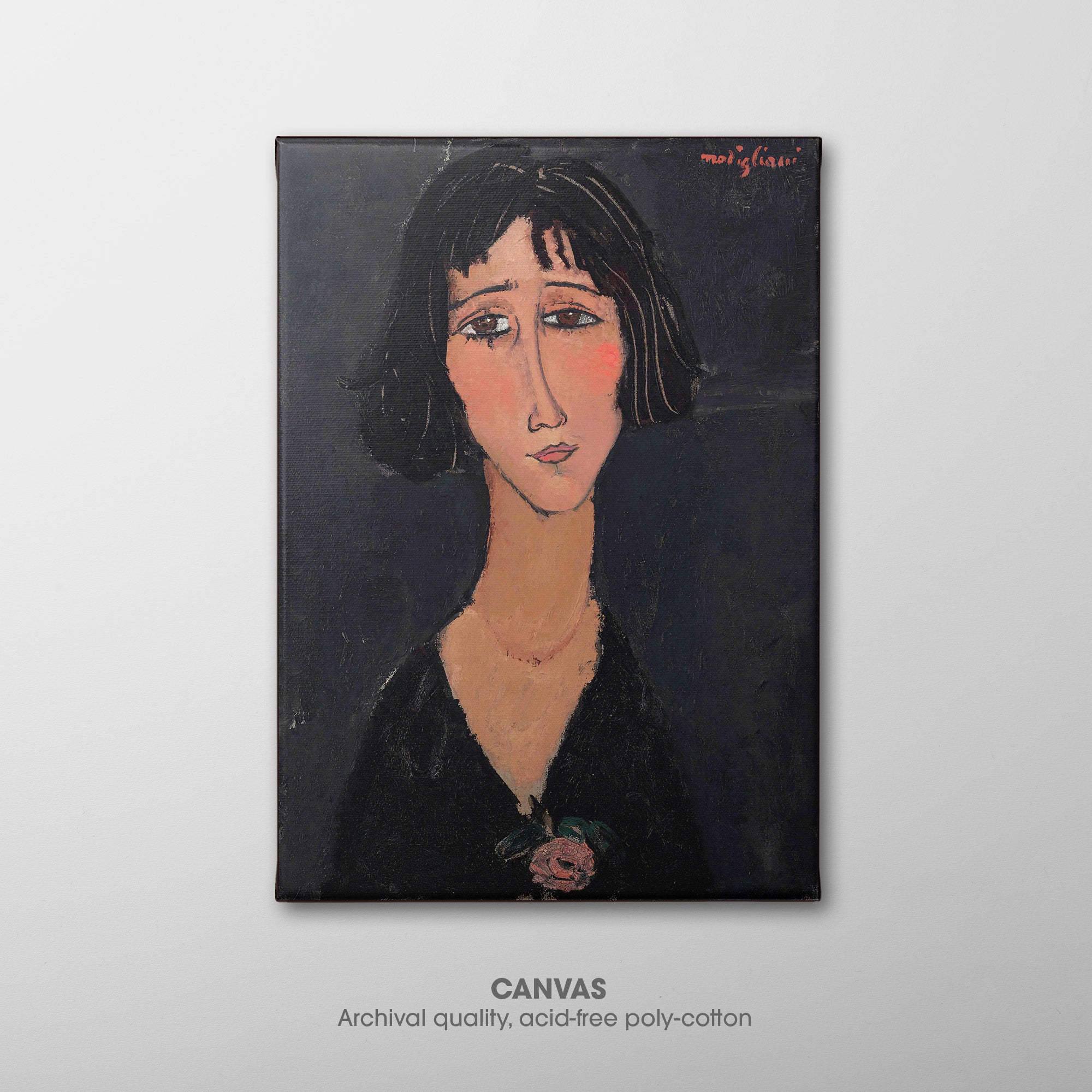
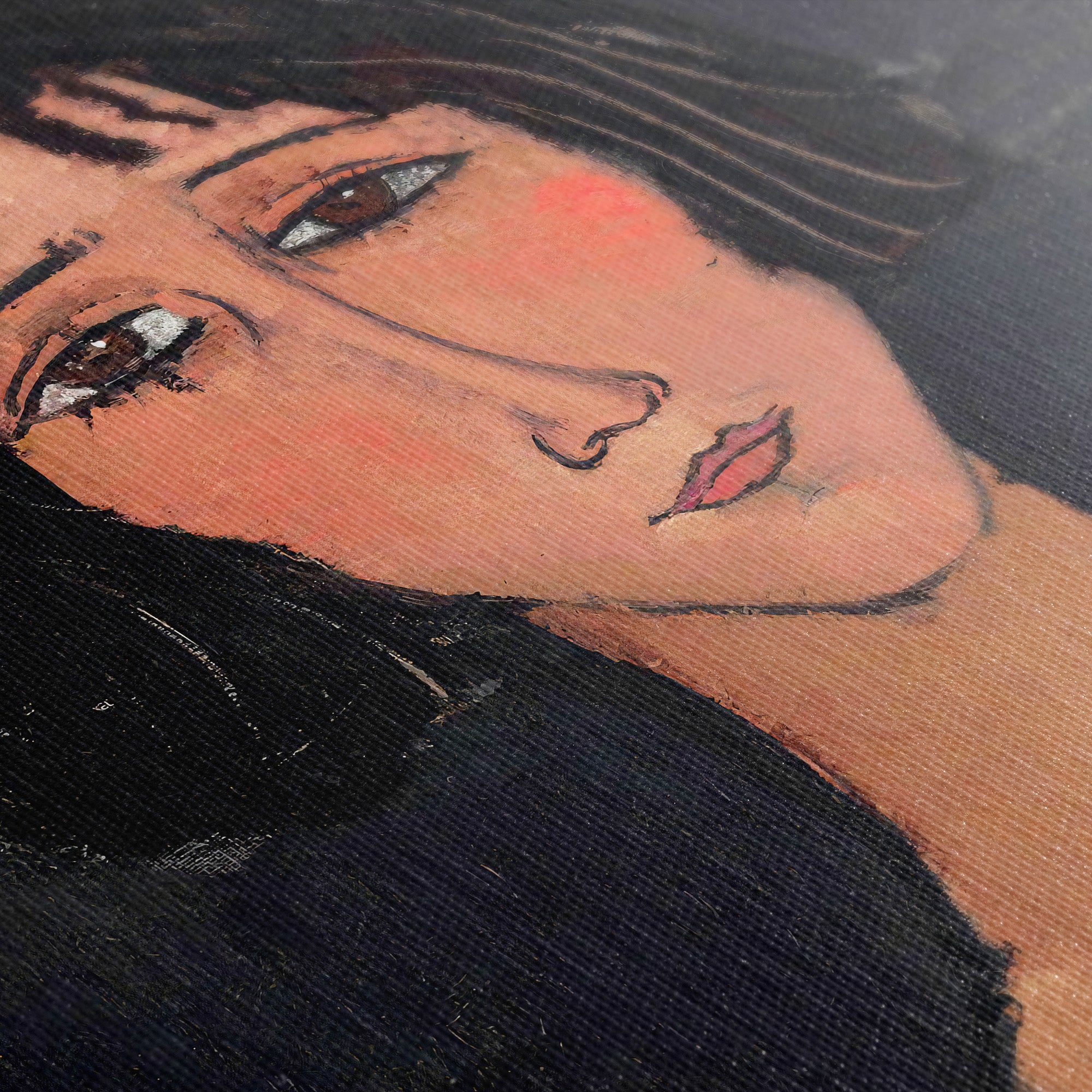 Young Woman with a Rose (1916, La jeune femme à la rose) by Amadeo Modigliani depicts a frontally posed figure in black dress, holding a rose. The dark haired and brown-eyed young woman is only identified as Margherita, the name of Modigliani's ➵
Young Woman with a Rose (1916, La jeune femme à la rose) by Amadeo Modigliani depicts a frontally posed figure in black dress, holding a rose. The dark haired and brown-eyed young woman is only identified as Margherita, the name of Modigliani's ➵◰ Canvas Reproductions
⧈ Framed Art Prints -
Girl in a Sailor's Blouse ☴ Modigliani ☲ Canvas
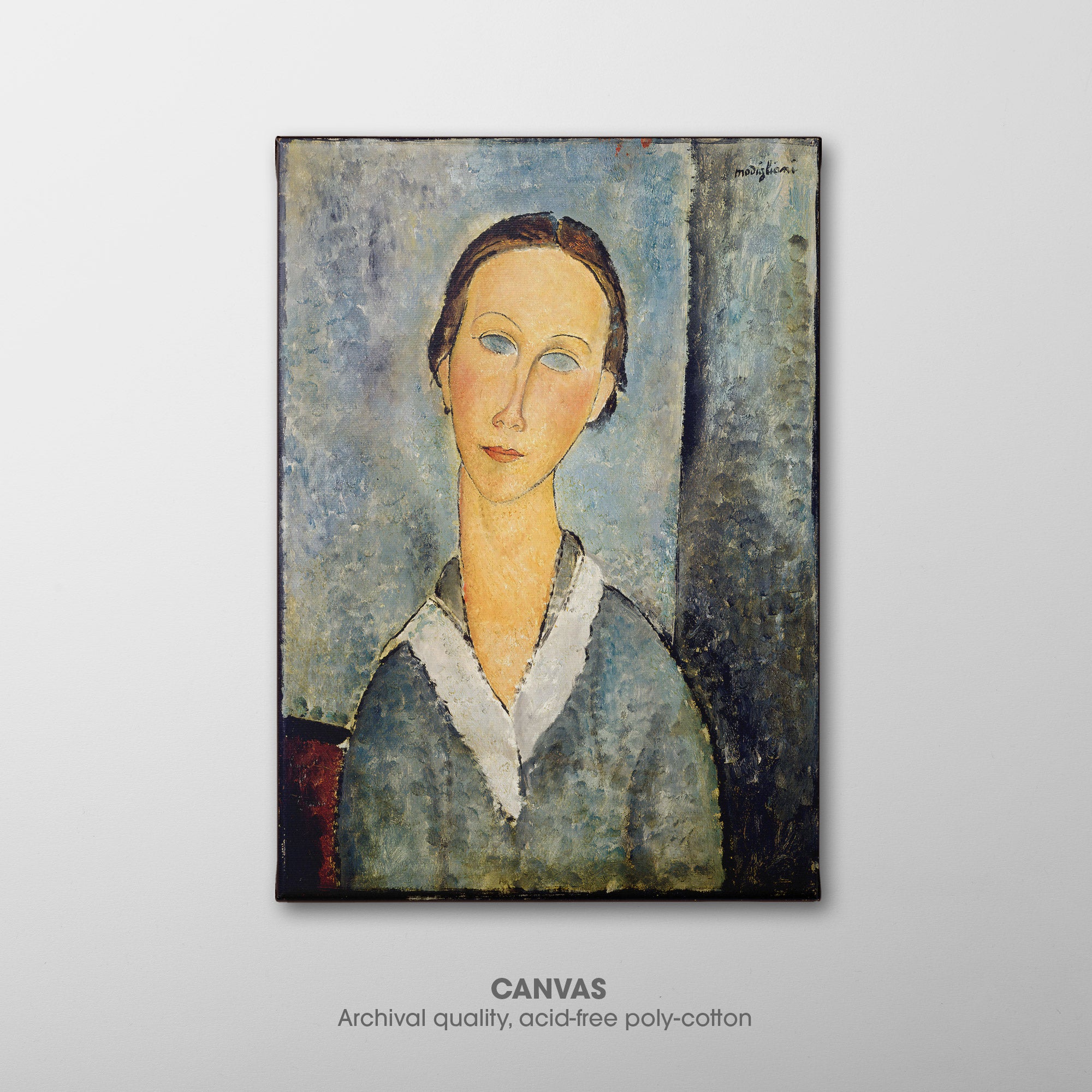
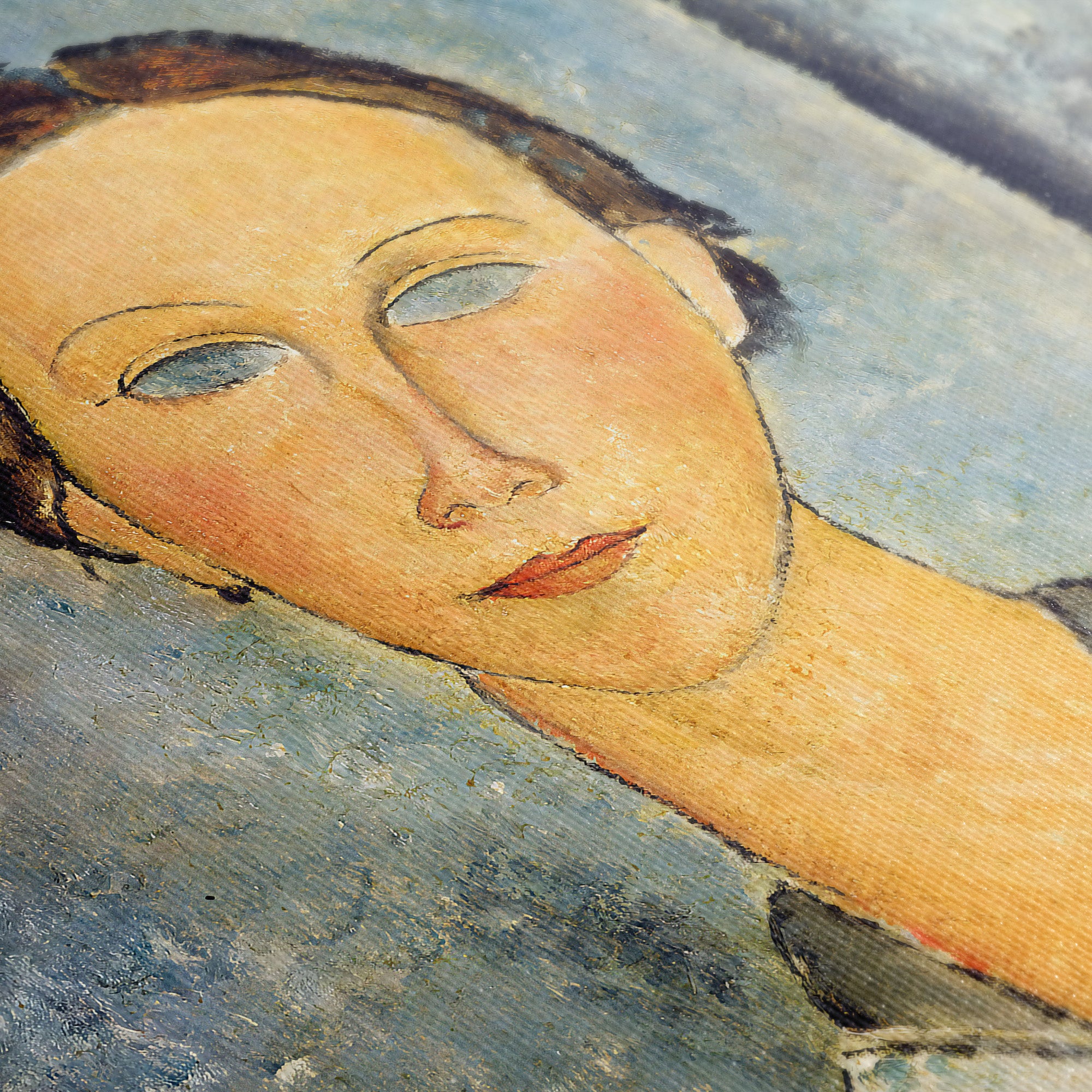 Girl in a Sailor's Blouse (1918) by Amedeo Modigliani was painted during his time in the south of France at the end of World War I, where he employed local young servants, shopgirls, and children as models. His quintessential female depiction, long ➵
Girl in a Sailor's Blouse (1918) by Amedeo Modigliani was painted during his time in the south of France at the end of World War I, where he employed local young servants, shopgirls, and children as models. His quintessential female depiction, long ➵◰ Canvas Reproductions
⧈ Framed Art Prints -
Water Lilies, Gray Weather ☱ Monet ☳ Canvas

 Water Lilies, Gray Weather (1907, Nymphéas, temps gris) by Claude Monet is one of a small series that he painted in a rare vertical format to capture the spectacular effects of late afternoon light upon his beloved waterlily pond. Overall he created ➵
Water Lilies, Gray Weather (1907, Nymphéas, temps gris) by Claude Monet is one of a small series that he painted in a rare vertical format to capture the spectacular effects of late afternoon light upon his beloved waterlily pond. Overall he created ➵◰ Canvas Reproductions
⧈ Framed Art Prints -
Windmills near Zaandam ☴ Monet ☰ Canvas

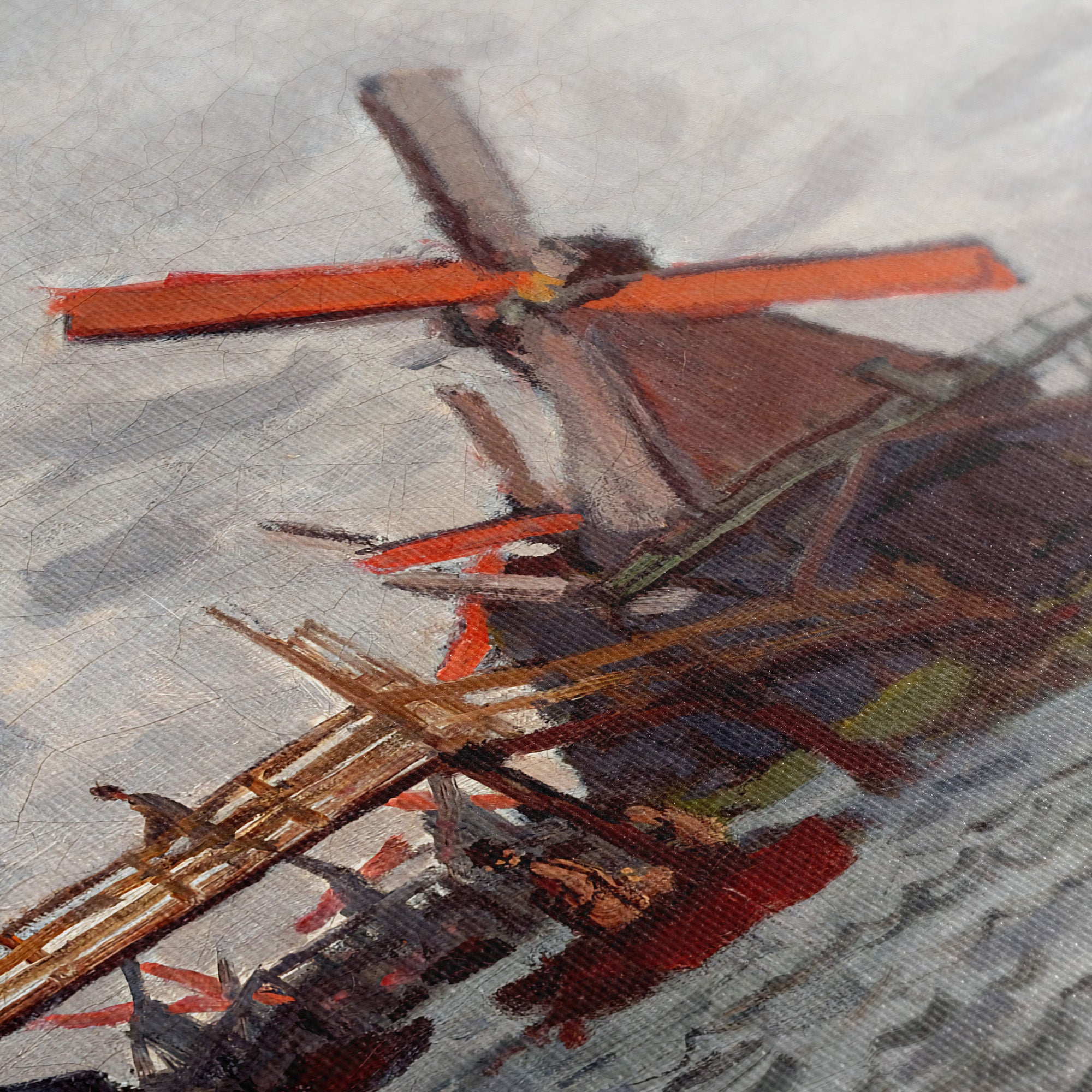 Windmills near Zaandam (1871) by Claude Monet depicts the windmills at Westzijderveld as seen from a boat, an example of the looser, experimental style which he developed during the 1870s. Monet made three visits to the Netherlands, on this occasion he spent ➵
Windmills near Zaandam (1871) by Claude Monet depicts the windmills at Westzijderveld as seen from a boat, an example of the looser, experimental style which he developed during the 1870s. Monet made three visits to the Netherlands, on this occasion he spent ➵◰ Canvas Reproductions
⧈ Framed Art Prints -
Water Lilies ☱ Monet ☰ Canvas

 Water Lilies (1899, Nymphéas) by Claude Monet is one of the very first paintings of his beloved water lily pond at his Giverny home. Monet began his garden at Giverny in 1893, transforming the marshy ground behind his home into a pond. ➵
Water Lilies (1899, Nymphéas) by Claude Monet is one of the very first paintings of his beloved water lily pond at his Giverny home. Monet began his garden at Giverny in 1893, transforming the marshy ground behind his home into a pond. ➵◰ Canvas Reproductions
⧈ Framed Art Prints -
The Green Wave ☵ Monet ☳ Canvas

 The Green Wave (1867, La vague verte) by Claude Monet depicts sailboats on the ocean, capturing the movement and energy of the waves in relation to the ships. An ocean of greens and blues dominates the scene, with a high horizon line ➵
The Green Wave (1867, La vague verte) by Claude Monet depicts sailboats on the ocean, capturing the movement and energy of the waves in relation to the ships. An ocean of greens and blues dominates the scene, with a high horizon line ➵◰ Canvas Reproductions
⧈ Framed Art Prints -
Water Lilies and Japanese Bridge ☱ Monet ☲ Canvas

 Water Lilies and Japanese Bridge (1899) by Claude Monet depicts the arched Japanese-style bridge in his water garden at Giverny. By the 1890s, he had established some wealth and was able to lavish his money on his own home and garden for ➵
Water Lilies and Japanese Bridge (1899) by Claude Monet depicts the arched Japanese-style bridge in his water garden at Giverny. By the 1890s, he had established some wealth and was able to lavish his money on his own home and garden for ➵◰ Canvas Reproductions
⧈ Framed Art Prints -
Woman with a Parasol ☰ Monet ☴ Canvas

 Woman with a Parasol – Madame Monet and Her Son (1875) by Claude Monet, also known as The Stroll (La Promenade), is one of his most recognizable works, and of impressionism as a whole. It depicts his wife Camille and their son ➵
Woman with a Parasol – Madame Monet and Her Son (1875) by Claude Monet, also known as The Stroll (La Promenade), is one of his most recognizable works, and of impressionism as a whole. It depicts his wife Camille and their son ➵◰ Canvas Reproductions
⧈ Framed Art Prints -
Dawn at Futamigaura ☵ Kunisada ☲ Canvas

 Dawn at Futamigaura (1832) by Utagawa Kunisada depicts the "wedded rocks" representing Izanagi and Izanami, the creation deities (kami) in Japanese mythology, joined by thick straw rope to demarcate a Shinto sacred space. The rocks tower above the beach, several travelers rest ➵
Dawn at Futamigaura (1832) by Utagawa Kunisada depicts the "wedded rocks" representing Izanagi and Izanami, the creation deities (kami) in Japanese mythology, joined by thick straw rope to demarcate a Shinto sacred space. The rocks tower above the beach, several travelers rest ➵◰ Canvas Reproductions
⧈ Framed Art Prints -
The Poet Hitomaro ☴ Kunisada ☱ Canvas

 The Poet Hitomaro at the Beach of Akashi (1832) by Utagawa Kunisada depicts the poet on the beach observing salt water gatherers under the setting sun. Kakinomoto no Hitomaro (c. 653-710) was a Japanese waka poet and aristocrat of the late Asuka period, ➵
The Poet Hitomaro at the Beach of Akashi (1832) by Utagawa Kunisada depicts the poet on the beach observing salt water gatherers under the setting sun. Kakinomoto no Hitomaro (c. 653-710) was a Japanese waka poet and aristocrat of the late Asuka period, ➵◰ Canvas Reproductions
⧈ Framed Art Prints -
Magician of Power ☳ Kunisada ☰ Canvas
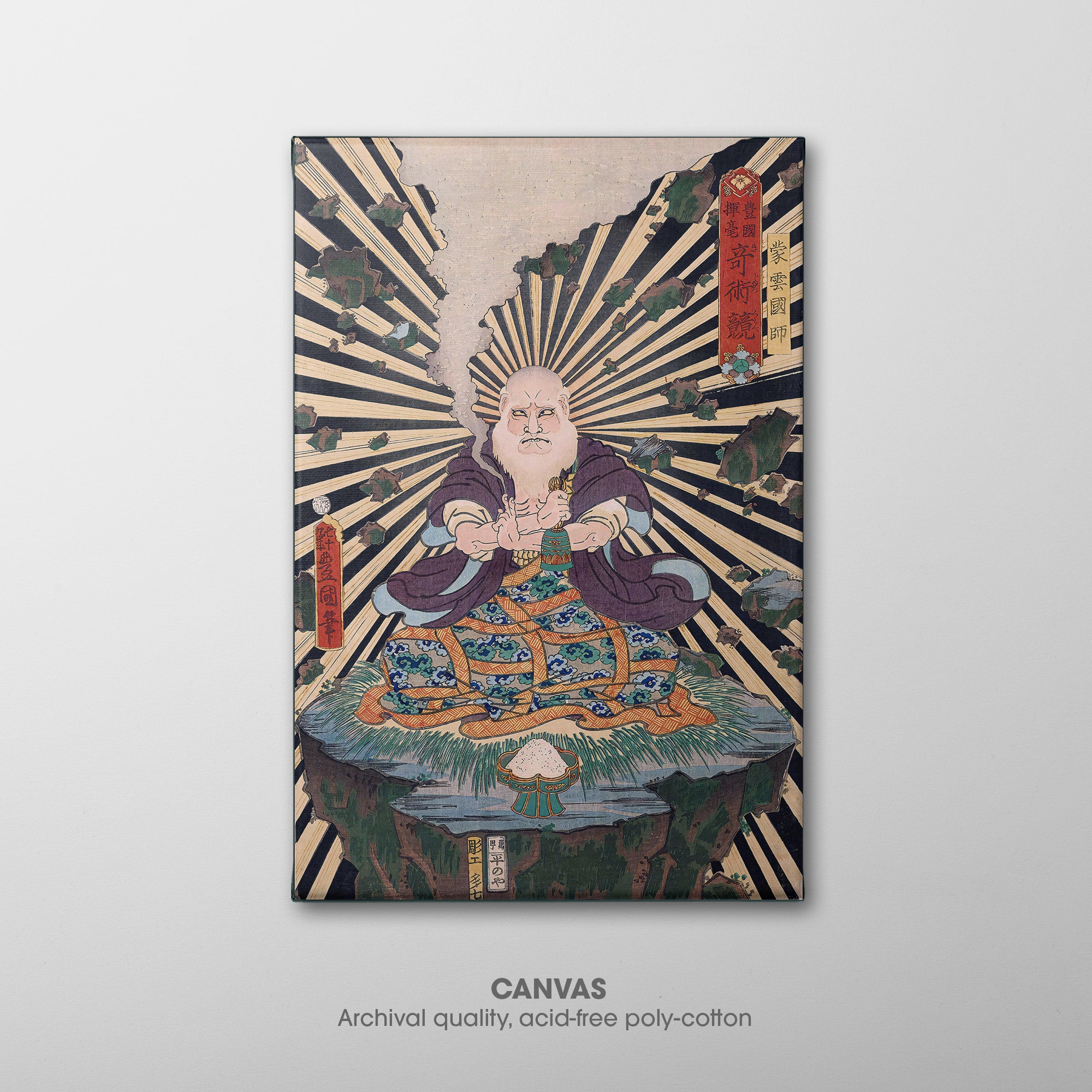
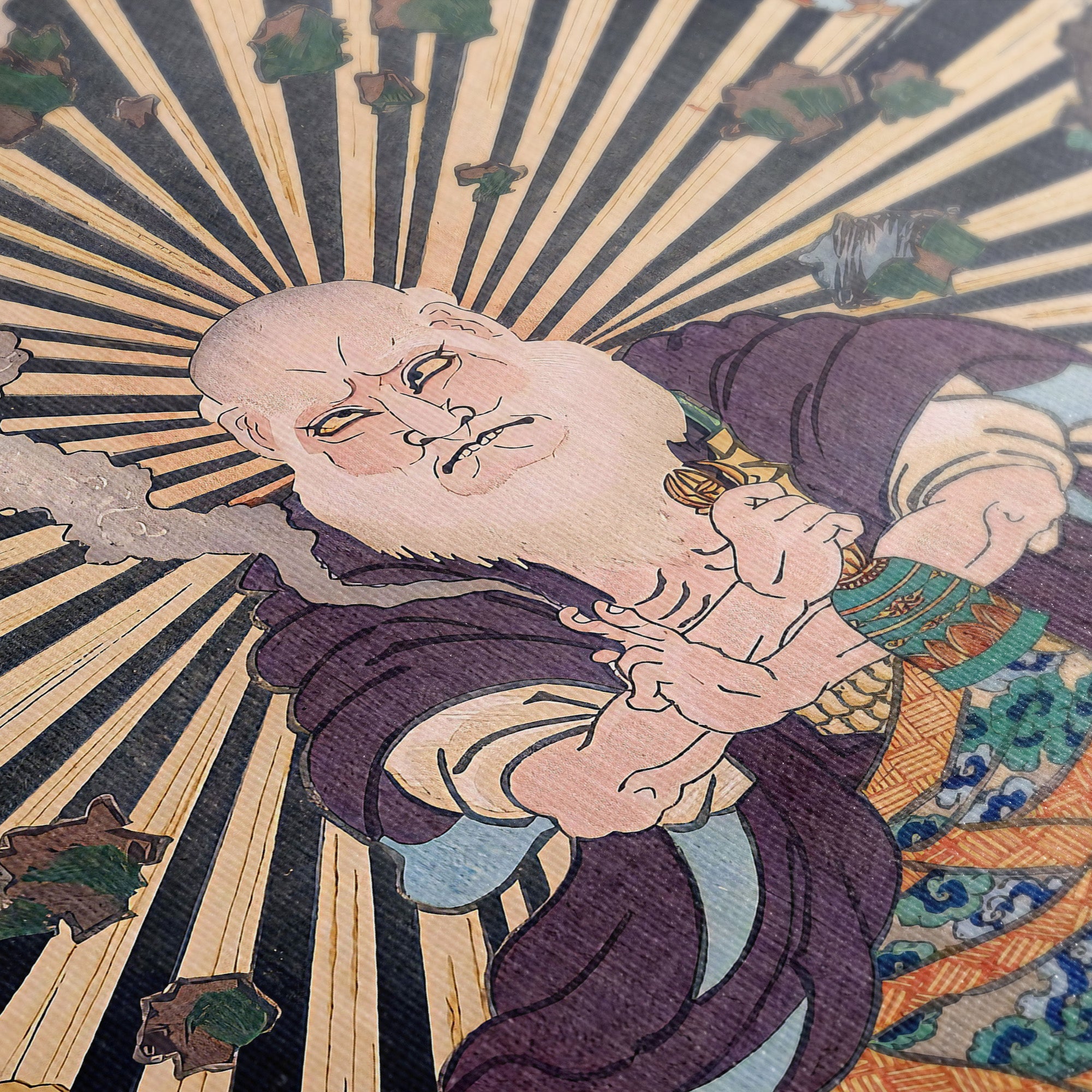 Magician of Power Môun-kokushi and Exploding Rocks (1863) by Utagawa Kunisada depicts the actor Ichikawa Kodanji IV as the magician Môun-kokushi from the kabuki drama Chin-setsu yumi-hari zuki. Môun, an evil monk, attempts to seize control of the kingdom of Ryûkyû from ➵
Magician of Power Môun-kokushi and Exploding Rocks (1863) by Utagawa Kunisada depicts the actor Ichikawa Kodanji IV as the magician Môun-kokushi from the kabuki drama Chin-setsu yumi-hari zuki. Môun, an evil monk, attempts to seize control of the kingdom of Ryûkyû from ➵◰ Canvas Reproductions
⧈ Framed Art Prints -
Ghost Rising from a Swamp ☳ Kunisada ☱ Canvas
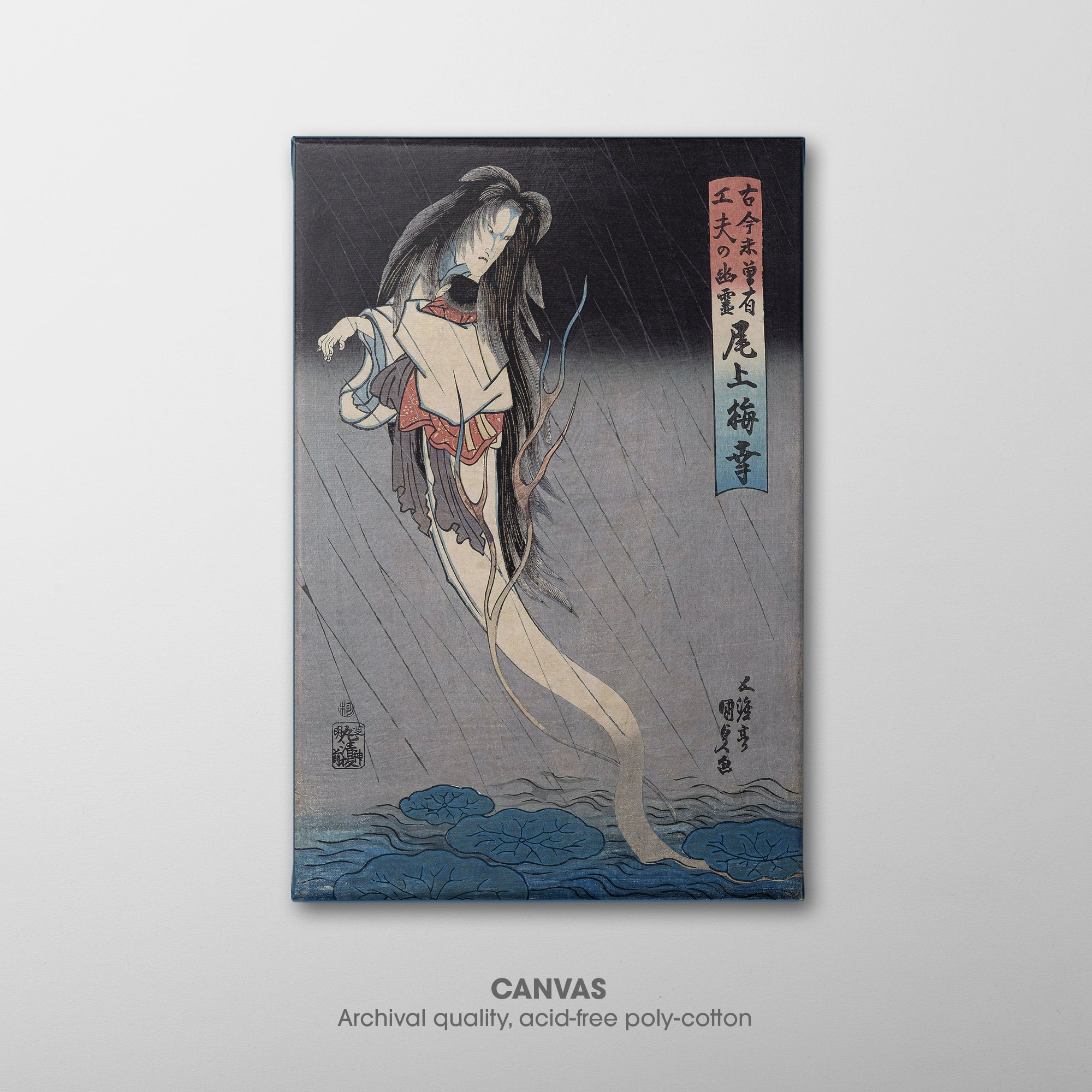
 Onoe Baiko as a Female Ghost Rising from a Swamp (1838) by Utagawa Kunisada depicts the kabuki actor Onoe Baiko, renowned for his skill at portraying ghosts. The character may be the ghost of the wife of Kohada Koheiji in the play ➵
Onoe Baiko as a Female Ghost Rising from a Swamp (1838) by Utagawa Kunisada depicts the kabuki actor Onoe Baiko, renowned for his skill at portraying ghosts. The character may be the ghost of the wife of Kohada Koheiji in the play ➵◰ Canvas Reproductions
⧈ Framed Art Prints -
Ghost of Kohada Koheiji ☳ Hokusai ☴ Canvas

 The Ghost of Kohada Koheiji (1832) by Katsushika Hokusai is from his ukiyo-e woodblock series One Hundred Ghost Stories, although only five prints are known to exist. This print depicts a scene from the story of Kohada Koheiji, a kabuki actor who ➵
The Ghost of Kohada Koheiji (1832) by Katsushika Hokusai is from his ukiyo-e woodblock series One Hundred Ghost Stories, although only five prints are known to exist. This print depicts a scene from the story of Kohada Koheiji, a kabuki actor who ➵◰ Canvas Reproductions
⧈ Framed Art Prints -
Kamakura no Gengorō ☳ Hokusai ☵ Canvas

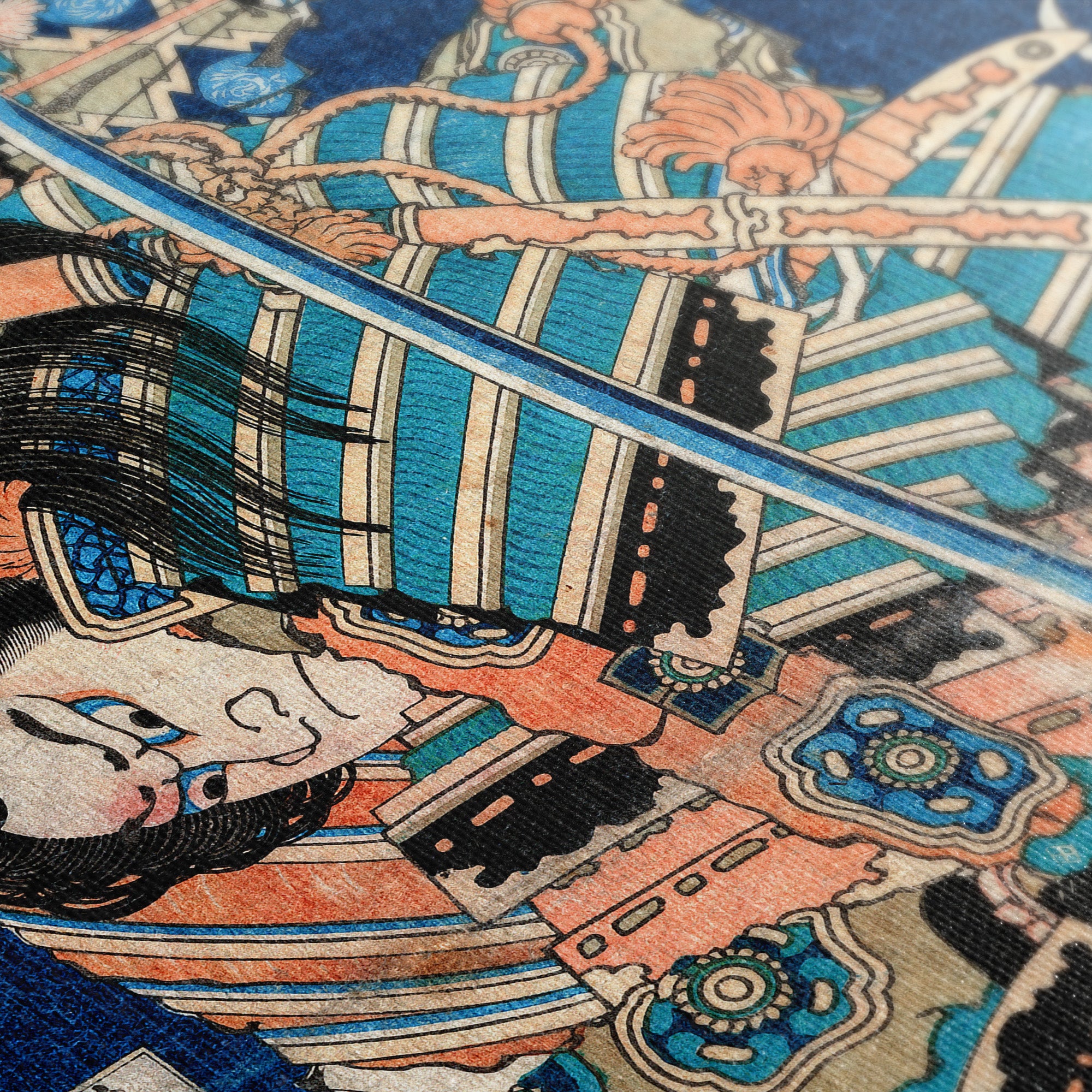 Kamakura no Gengorō Seizing Torinoumi Tasaburo (1832) by Katsushika Hokusai is a ukiyo-e woodblock print that depicts a scene from the renowned kabuki play The Chūshingura, where the heroic Minamoto warrior Kamakura no Gengorō confronts the treacherous Torinoumi Tasaburo in a thrilling ➵
Kamakura no Gengorō Seizing Torinoumi Tasaburo (1832) by Katsushika Hokusai is a ukiyo-e woodblock print that depicts a scene from the renowned kabuki play The Chūshingura, where the heroic Minamoto warrior Kamakura no Gengorō confronts the treacherous Torinoumi Tasaburo in a thrilling ➵◰ Canvas Reproductions
⧈ Framed Art Prints -
The Good Samaritan ☰ Rembrandt ☷ Canvas

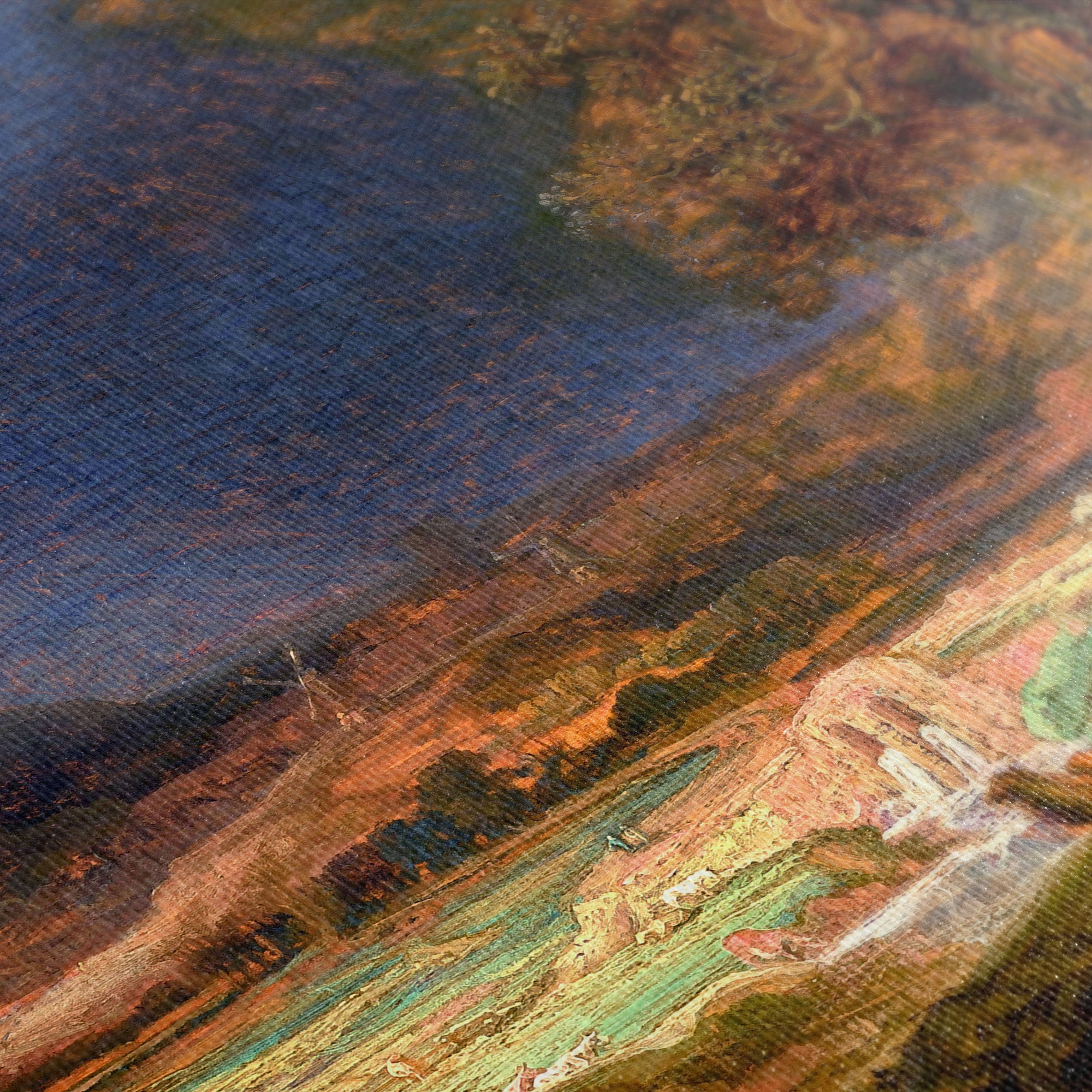 Landscape with the Good Samaritan (1638) by Rembrandt van Rijn depicts the biblical parable of the Good Samaritan, a compassionate figure tending to a wounded traveler on the side of a road. The scene shows the Samaritan bandaging the man's wounds while ➵
Landscape with the Good Samaritan (1638) by Rembrandt van Rijn depicts the biblical parable of the Good Samaritan, a compassionate figure tending to a wounded traveler on the side of a road. The scene shows the Samaritan bandaging the man's wounds while ➵◰ Canvas Reproductions
⧈ Framed Art Prints -
The Night Watch ☲ Rembrandt ☳ Canvas
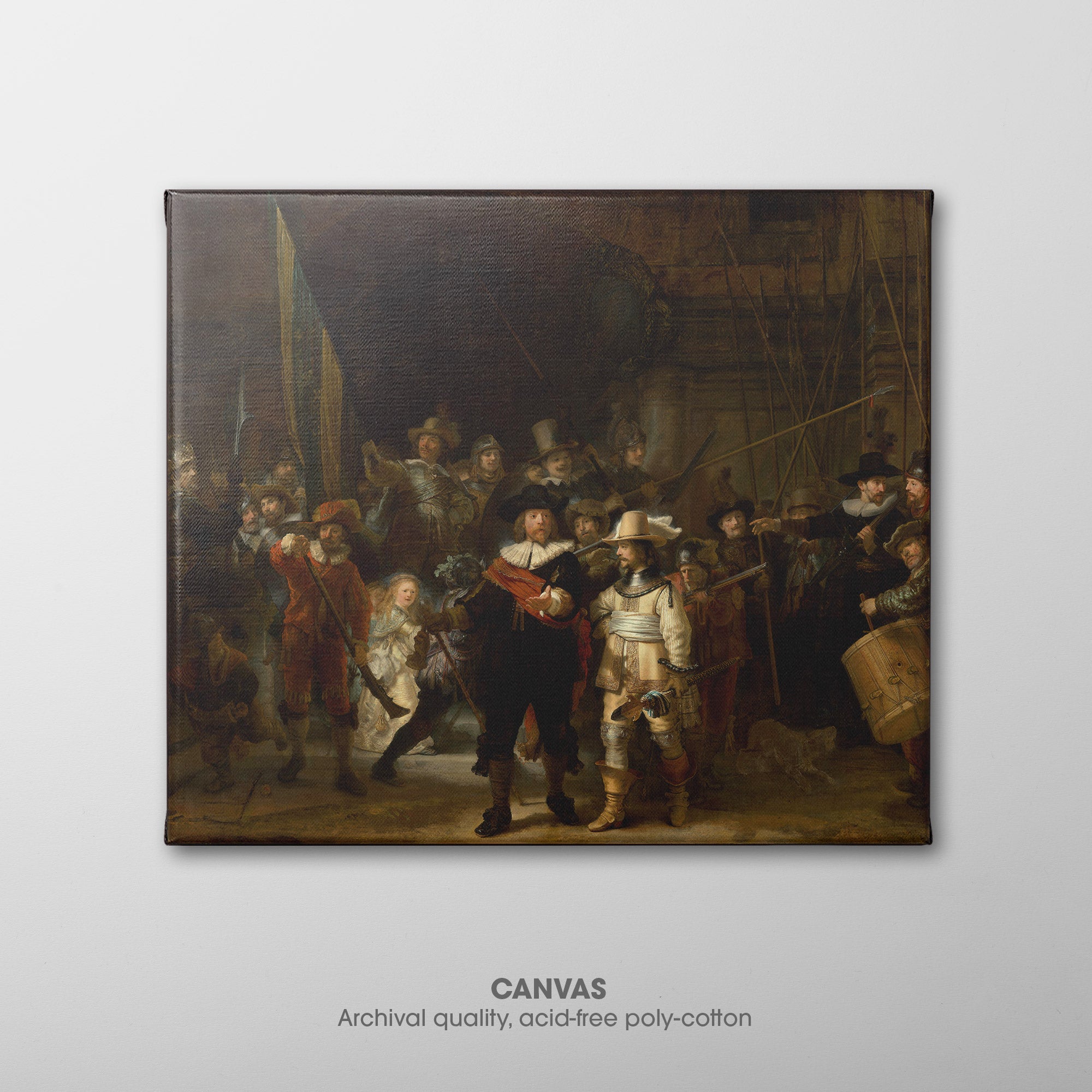
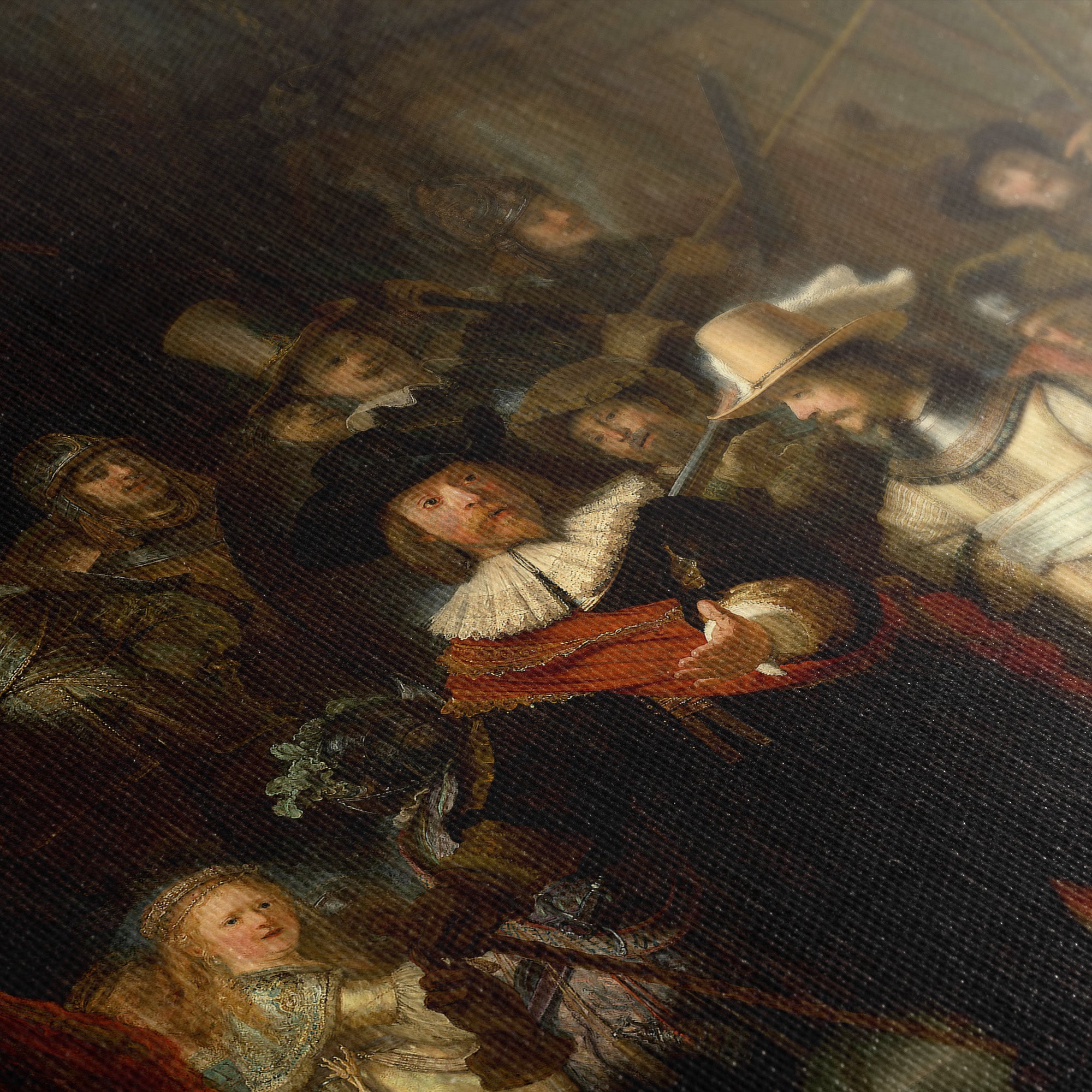 The Night Watch (1642) by Rembrandt van Rijn, alternatively titled Militia Company of District II under the Command of Captain Frans Banninck Cocq, is one of the most famous Dutch Golden Age paintings. It depicts a group of Kloveniers, a civic guard, ➵
The Night Watch (1642) by Rembrandt van Rijn, alternatively titled Militia Company of District II under the Command of Captain Frans Banninck Cocq, is one of the most famous Dutch Golden Age paintings. It depicts a group of Kloveniers, a civic guard, ➵◰ Canvas Reproductions
⧈ Framed Art Prints -
Old Man with Turban ☶ Rembrandt ☶ Canvas
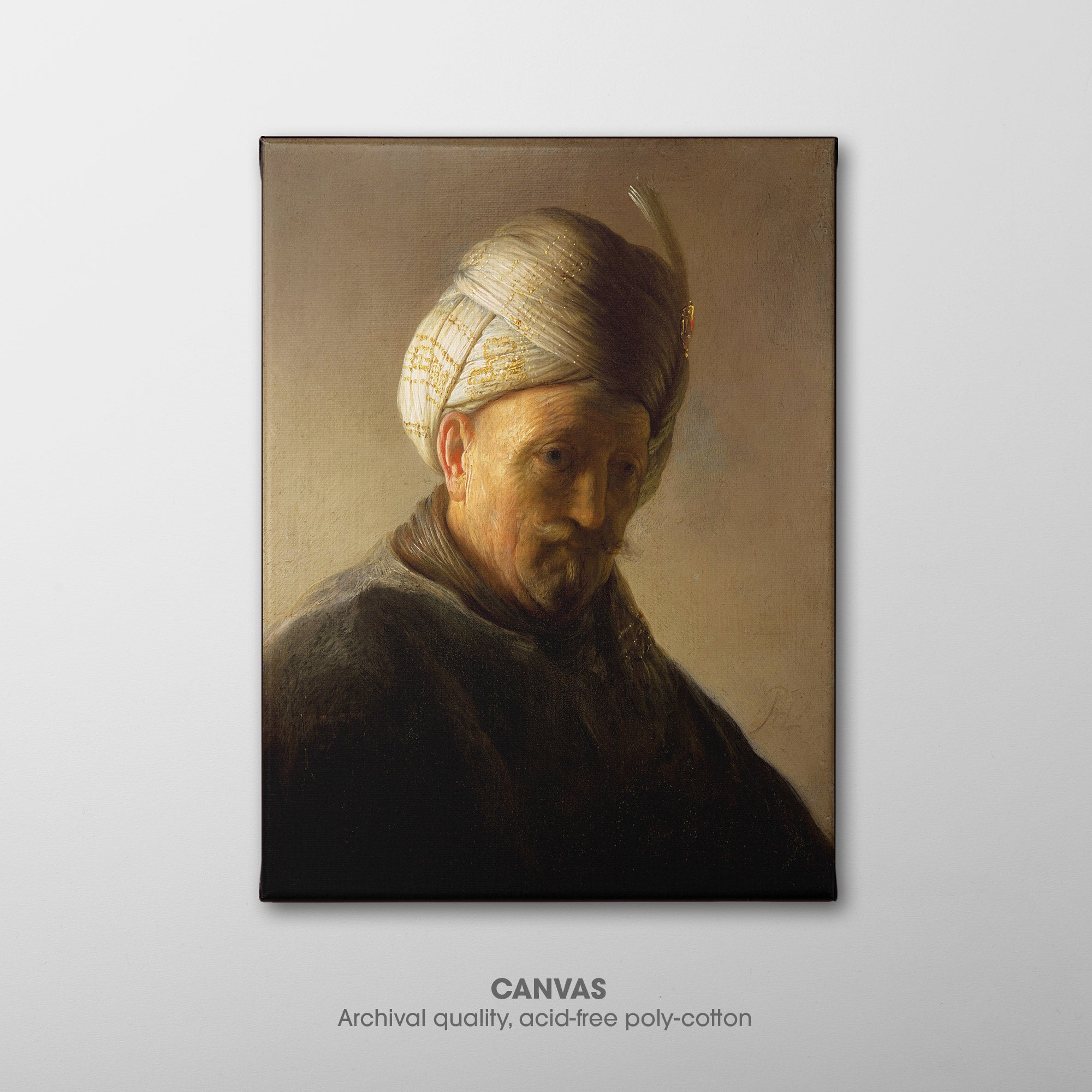
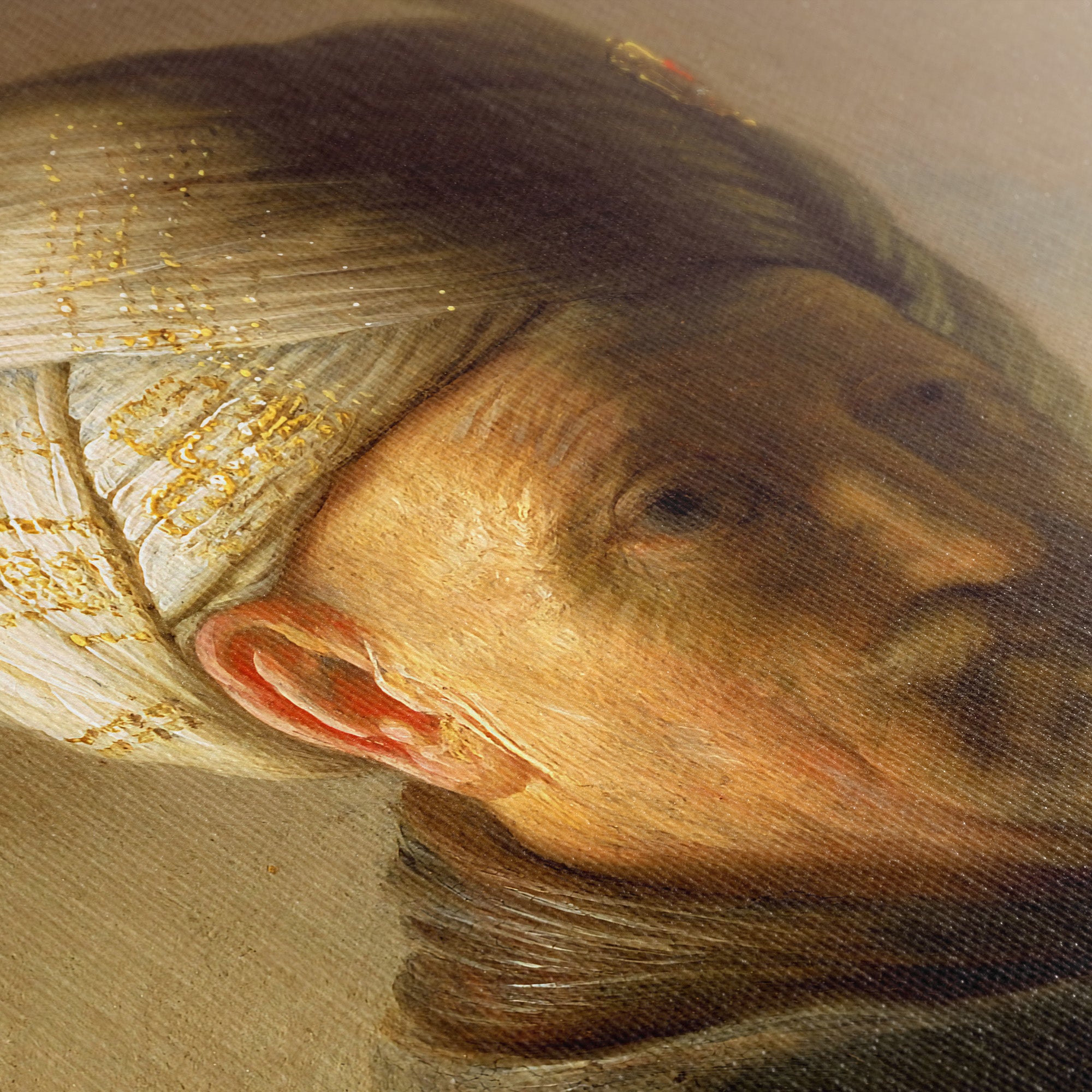 Bust of an Old Man with Turban (1628) by Rembrandt van Rijn depicts an unnamed man in a decorative turban, making it a "tronie" or character study not intended to depict a specific person. Pictures of imaginary Persian or Ottoman princes were ➵
Bust of an Old Man with Turban (1628) by Rembrandt van Rijn depicts an unnamed man in a decorative turban, making it a "tronie" or character study not intended to depict a specific person. Pictures of imaginary Persian or Ottoman princes were ➵◰ Canvas Reproductions
⧈ Framed Art Prints -
Self-Portrait with Beret ☴ Rembrandt ☷ Canvas
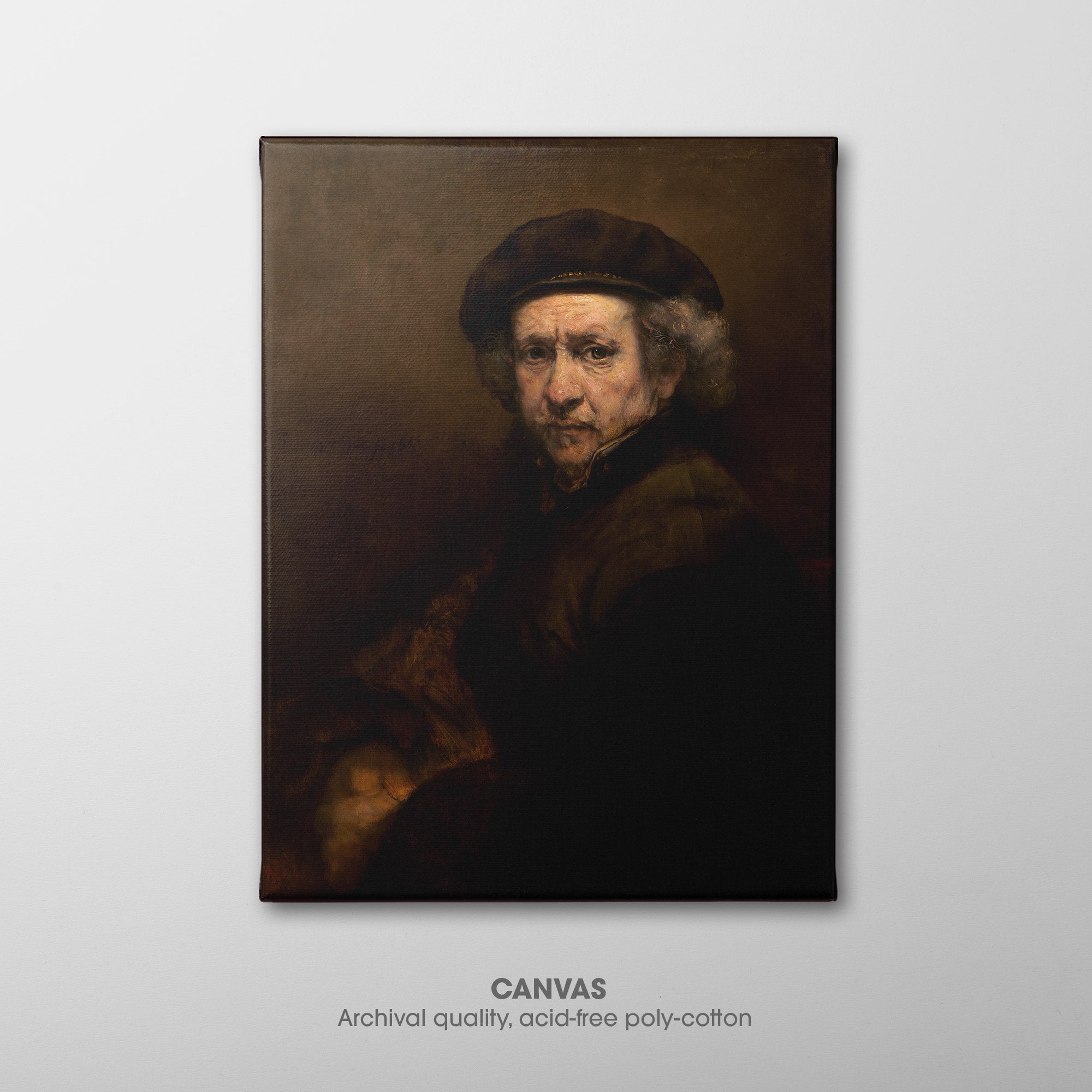
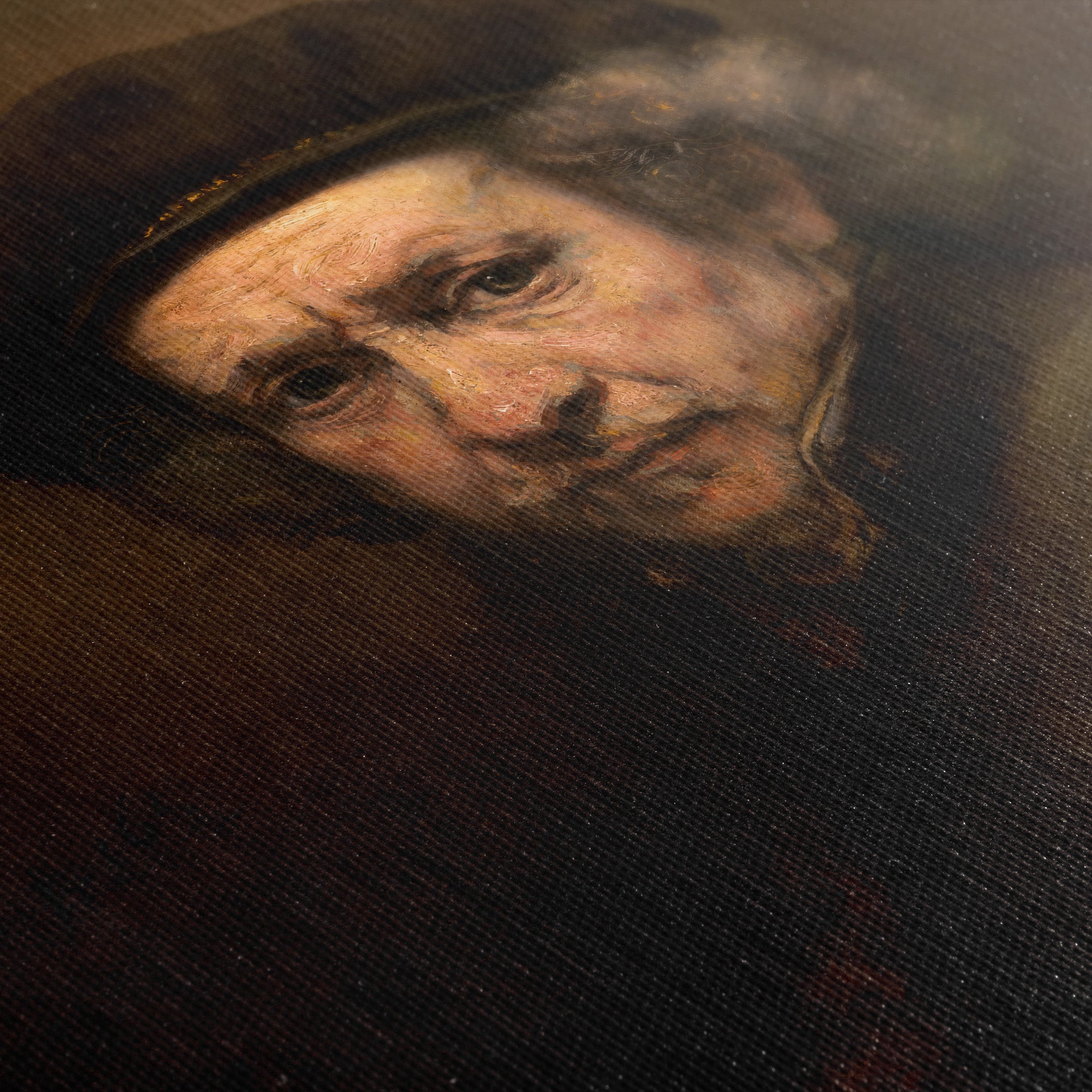 Self-Portrait with Beret and Turned-Up Collar (1659) by Rembrandt van Rijn is one of over 40 self-portraits he created. Rembrandt is seated, wearing a fur cloak, his hands clasped in his lap. His face is well lit with detailed brushwork, while his ➵
Self-Portrait with Beret and Turned-Up Collar (1659) by Rembrandt van Rijn is one of over 40 self-portraits he created. Rembrandt is seated, wearing a fur cloak, his hands clasped in his lap. His face is well lit with detailed brushwork, while his ➵◰ Canvas Reproductions
⧈ Framed Art Prints -
Anxiety ☳ Munch ☵ Canvas

 Anxiety (1894) by Edvard Munch is one of several similar works depicting a strong emotional reaction to a sunset overlooking the Oslo fjord. Going for a walk at sunset, Munch saw the setting sun turn the clouds red: "the sunset was particularly ➵
Anxiety (1894) by Edvard Munch is one of several similar works depicting a strong emotional reaction to a sunset overlooking the Oslo fjord. Going for a walk at sunset, Munch saw the setting sun turn the clouds red: "the sunset was particularly ➵◰ Canvas Reproductions
⧈ Framed Art Prints -
Love and Pain ☲ Munch ☵ Canvas

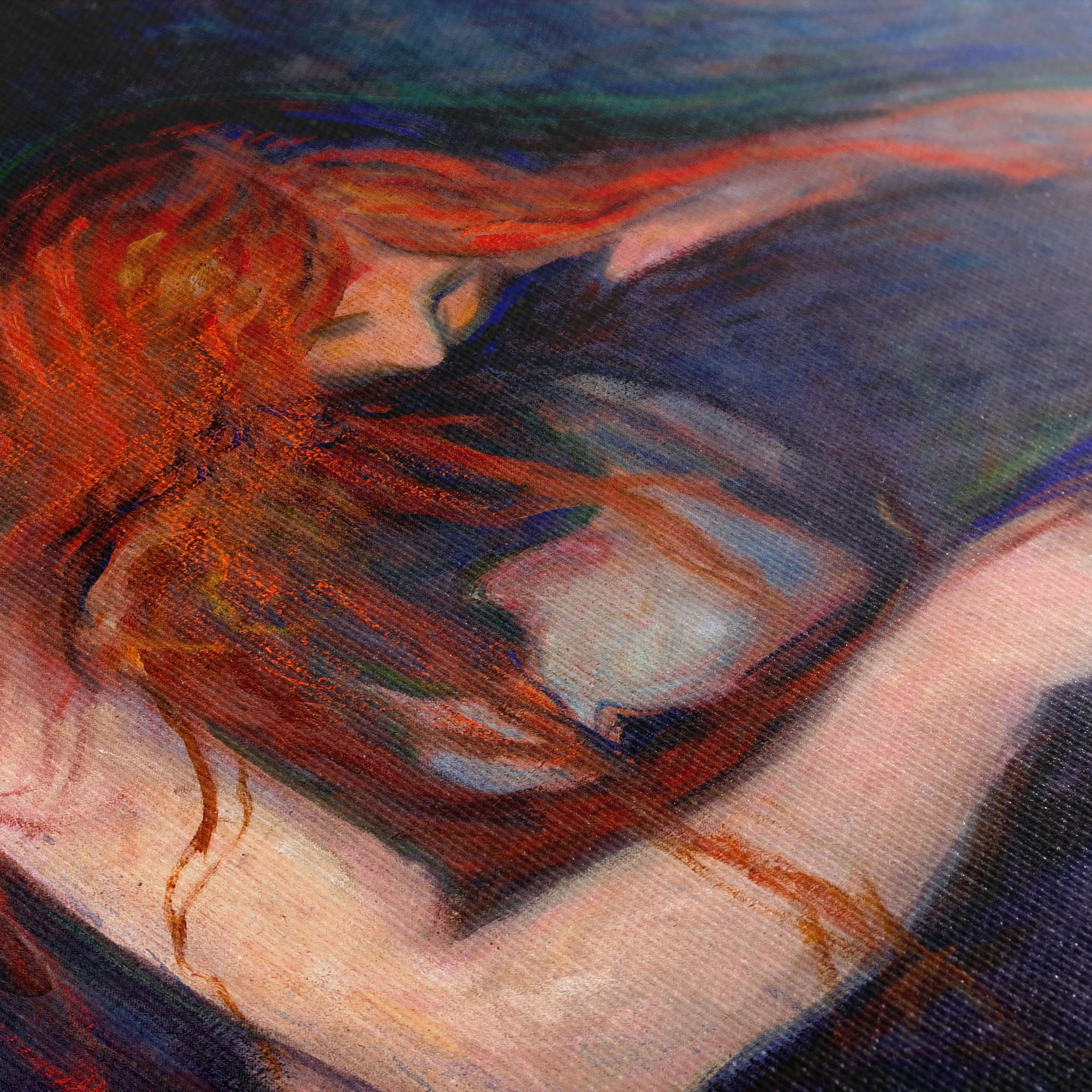 Love and Pain (1895) by Edvard Munch, also referred to as Vampire (though not by Munch), is one of six different versions created between 1893 and 1895. It depicts a woman with bright red hair embracing a man, and kissing his neck. ➵
Love and Pain (1895) by Edvard Munch, also referred to as Vampire (though not by Munch), is one of six different versions created between 1893 and 1895. It depicts a woman with bright red hair embracing a man, and kissing his neck. ➵◰ Canvas Reproductions
⧈ Framed Art Prints



























